#kind of played around with some slightly different rendering techniques and i really really like the results 11/10 learning exercise
Explore tagged Tumblr posts
Text






some limited colour + brush studies feat. motogp!
#kind of played around with some slightly different rendering techniques and i really really like the results 11/10 learning exercise#wanna work on some portraits again so more art soon i hope#aes arts!#motogp#motogp fanart#celestino vietti#cv13#marco bezzecchi#mb72#fabio quartararo#fq20#marc marquez#mm93#alex marquez#am73#francesco bagnaia#fb63#franky morbidelli#fm21
388 notes
·
View notes
Note
how do you render your colors so nicely they're very pleasant to look at
thank you, that means a lot! :’D
honestly, i haven’t done many studies of actual lighting from life, i just try to learn from whatever i see around me. if i like a piece by another artist or a pretty photo, i try to figure out why it appeals to me, and i play around until i can replicate the look in my own art.
as a disclaimer, non of this is scientific or realistic by any means, and it’s not a good reference if you’re trying to create really accurate lighting effects - this is just a stylized suggestion of light that i like to paint.

first i choose my base colors. for characters i draw often, i make fixed color pallets for them that i like to think of as their “absolute” or “true” colors - basically what they would look like without any outside influence from environments and lighting. just the flat colors.

then i take the true color of their skin tone for instance, saturate and darken it slightly, and add a neighboring hue to it. in this case, jack’s skin is a pinkish color, so i add more red into it to make the shadow appear richer and more lifelike [it’s hard to explain, so if you need a more detailed guide on that, i can make a visual one]. i take that darker tone and “sketch” out where the shadows fall on the face. these particular shadows are pretty contrasted and dramatic, but these techniques can apply to softer shading as well.
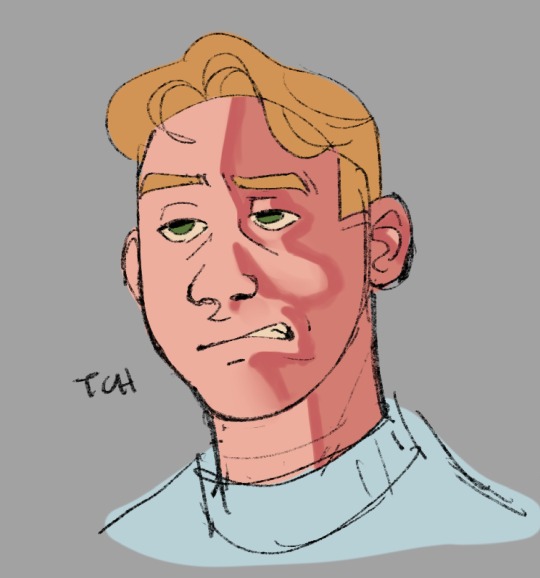
now here’s the fun part: darken, saturate, and shift the hue of your shadow color again. it looks wild, but outline the edge of your shadow with this darker color, and it creates a sort of burning effect. it looks like warm, harsh light on the skin.

then blend out the outline into the shadow a bit. i really love this effect and while it’s not appropriate for every kind of lighting, sometimes i use it anyway just because it adds a shiny quality to the painting.
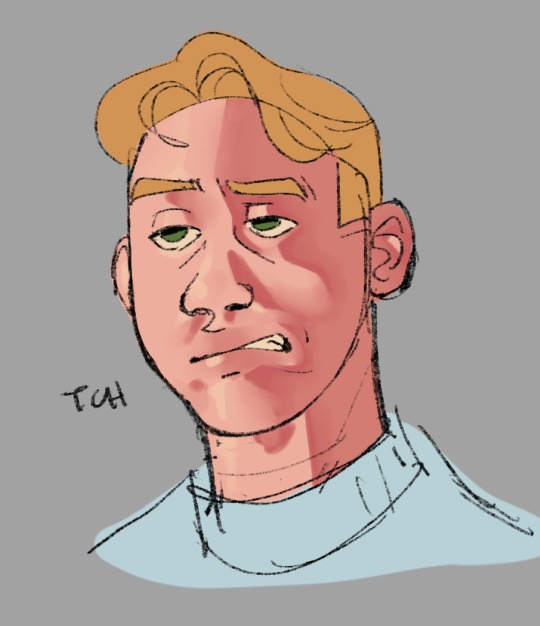
now highlights! for lighter colors, i take the true tone of jack’s skin, then lighten and desaturate it. i also shift it’s hue as well, but instead of adding a red tint, i lean more into the orange side of the sliding scale. this sets it apart nicely from the shadows and creates a sense of depth.
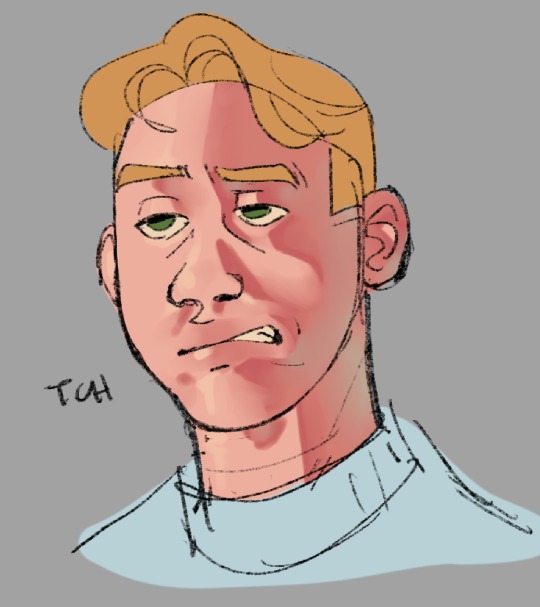
finally, i sometimes like to add a bluish, more desaturated tone in the deeper parts of the shadows as if there’s another light behind him. there can be many different light sources in your character’s environment and i like to consider what best sets the mood of the painting and makes it feel more immersive. jack has a soft blue light behind him, and it reflects on the shadowed part of his face.
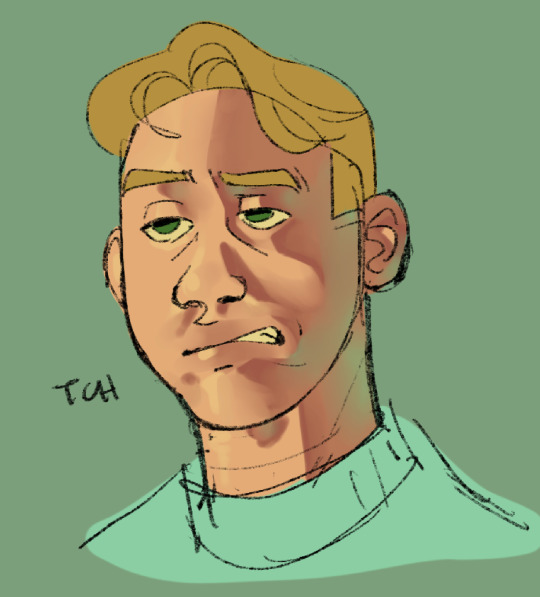
then i like to add a quick filter over the art to see how it would look in different environments. light can change the true colors of your character to extreme degrees, and depending on how you paint it all to interact and work together, you can create the illusion of something that we know is a pinkish color, even if it appears dark auburn or greyish green due to the lighting, for example. this is just one short [and admittedly rushed] example of lighting, as there’s infinite possibilities and variations in what you can do. but this is my personal favorite technique and the moment and it’s really satisfying to paint.
also, i forgot to do it here rip, but often i will take a blush color and blend around the character’s cheeks, nose, ears, lips etc to add some inherent variation in the skin and keep them from looking like a creepy porcelain doll lol.
i hope this was useful, thanks for asking!
#asks#art reference#this was so rushed sjdkjdnebevs maybe one day i can make a super in depth how to on it
34 notes
·
View notes
Photo
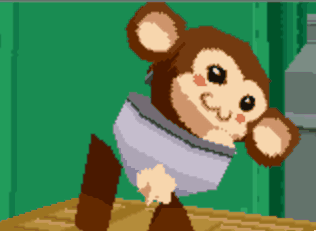
Guide to that elusive “PS1-pixelated-lowpoly”(but not really)
With the videogame playing population growing up we've finally broke from pixel-art nostalgia into the broadly called "low-poly" nostalgia. On closer look this broad categorization gets further described as “PS1 pixelated textures low-poly”, which is a bit better, but still is a really broad and a pretty wrong description of this style that’s so dear to a plenty of game-playing and game making individuals these days. I’ll try to dive into some of the technicalities and examples of this style in the attempt to find it’s characteristics and some actual technical requirements to meet this style.
Let’s start with the obvious, calling it PS1 low-poly is wrong, mostly because the same games were release on Nintendo 64, Dreamcast and PC. More so, games released later can be put into the same category, plenty of NDS or PSP games fit into the same style and adhere to the same economy principles. The only real surface level thing unifying these games is the game size, that is, the games came on CDs. The advent of a DVD format really changed up how the games look, so the graphical style we’re talking about here is called CD-3D in smaller circles.
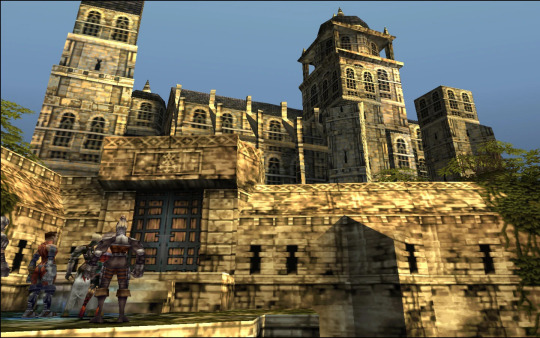
First let’s look at the games that fit the criteria would give you some information to describe the style, textures are obviously small enough to have visible pixelation (hidden by texture filtering) and models are obviously low-poly (that is around or less than 500 triangles for a character), but let’s see what doesn’t seem so obvious. Here’s Spyro and Crash, fan favorites
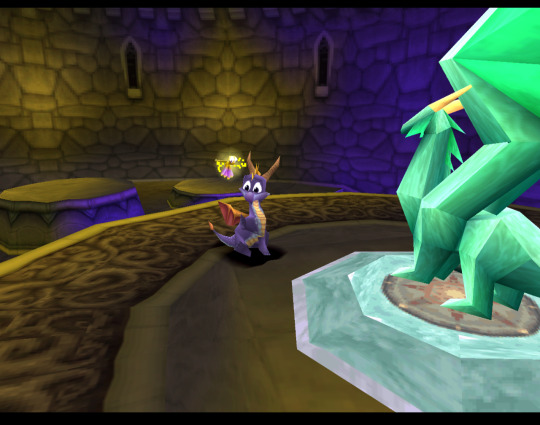
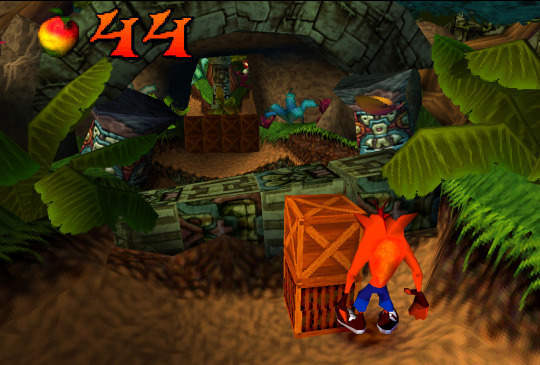
Both games check both points we’ve noted before, but what’s not obvious to an untrained eye is that these games both extensively use Vertex Color, the thing you’ll notice more and more in other games we’ll talk about. Vertex Color is absolutely simple, each vertex of a mesh can be assigned a RGBA value and they’re then linearly blended with other vertex colors. Notice how in Spyro the yellow and purple light is placed on places where texture is repeated, following that you can eyeball where the wireframe is and then you’ll see that the vertex color is used to simulate lighting. Crash himself is filled with Vertex Color, it’s a cheap way to avoid using textures, while having some control over the color of the thing, instead of it being a solid chunk. If you search-engine around you can also find some really fascinating notes on the development of the original Crash and the tricks they’ve pulled! The more ingenious way to use Vertex Color is to take a look at Spyro skyboxes:

Notice how the clouds are diamond-like in shape and are linearly gradiented to the next point in the wireframe.
Vertex color was used extensively and fell off with the increasing complexity of the meshes, delegated mostly to technical masking of stuff like foliage, it’s still a powerful tool for lower triangle counts.
Textures
Now, let’s talk about the textures. Pixelated textures look nice and crisp these days, at the age of 1080p being the norm, turning texture filtering really makes the games look crisp and feel right
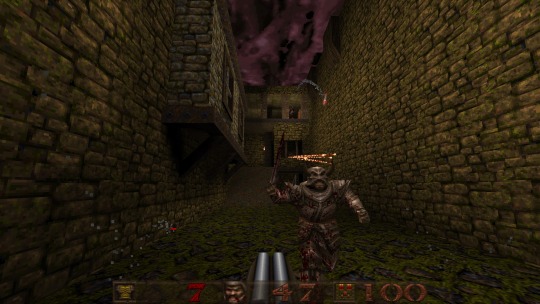
Quake 1 is a perfect example of CD-3D style, often undeservingly forgot in discussions about this style.
But this makes us forget that the textures were often authored with texture filtering in mind. Careful step gradienting to make textures seem smoother after being filtered is a craft in itself.
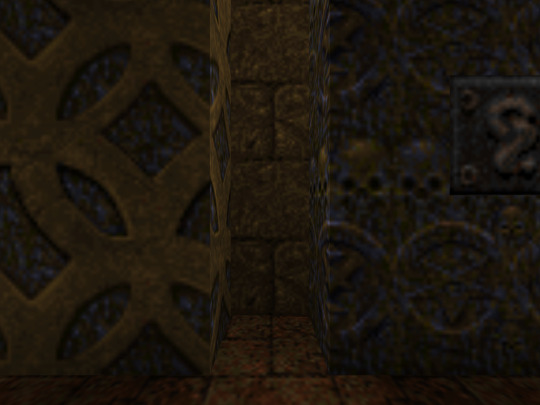
Texture filtering is not bad in itself, some games look better without it these days, because of the display resolutions, but it’s still a valid tool to apply, it can help push low-res texture a bit higher and produce a softening effect make those 4 pixels into a round circle or improve a visual effect.
Of course, some games took a deliberate approach of avoiding smudged look, like Megaman Legends, for example.
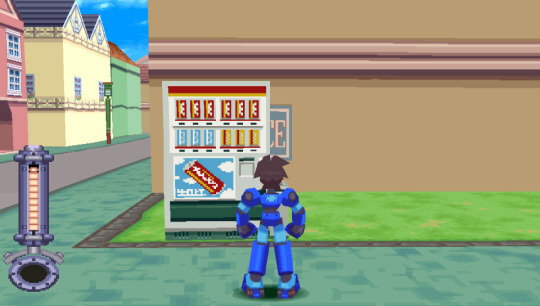
Via a very deliberate texture economy and unwrapping the developers were able to produce very crisp and pixel perfect textures (slightly warped by the infamous PS1 rendering), that look absolutely astounding when you render the game in a modern resolution. Pixel-aware UV Unwrapping, is being used in most games that are considered the pinnacle of CD-3D style, this technique is so powerful, that it was used to great effect in PS2 era games, PSP games and even modern games like Guilty Gear (for a different effect though). Let’s take a closer look,
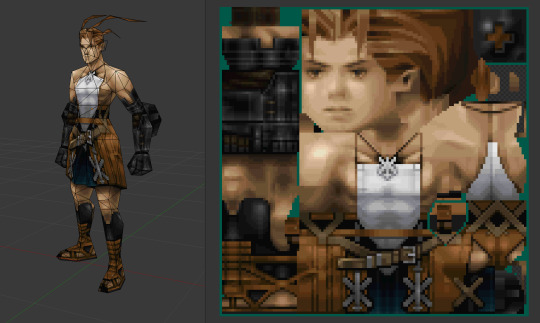
As you can see, our character is unwrapped in square pieces in such a way that a straight line on a texture will produce a straight line on a model. While Vagrant Story is an absolutely perfect in execution of this technique, it’s also used in a same way in Megaman Legends
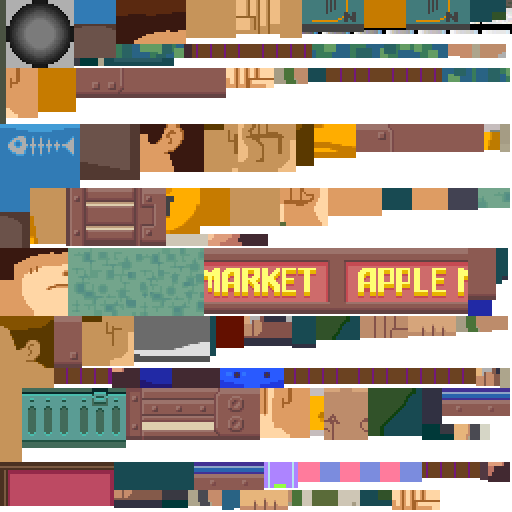
While I couldn’t find a reliable tool that works with modern 3D modeling software to allow pixel perfect alignment, just using a UV Checker will produce great results. This method also requires some thought put into your topology before unwrapping, but it’s strong point is that you can make changes into your unwrapping and geometry easily, making little tugs won’t break the whole thing.
As you can also note, Vagrant Story textures are authored in a single atlas, while Metal Gear Solid separates this atlas into smaller chunks like this:

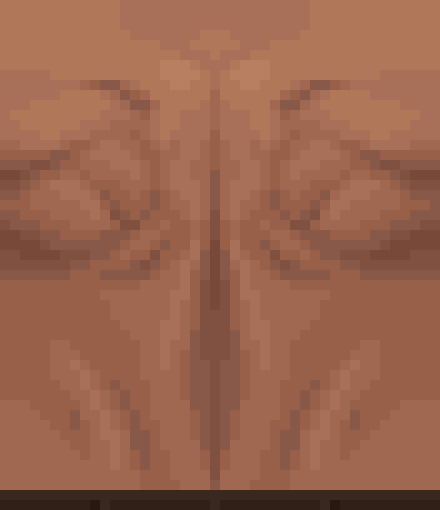
Allowing for easier unwrapping, since you can unwrap into the full UV space and then change the size of the texture to scale your results. The other important thing is that you probably want your characters in a T-pose when you’re unwrapping, since this allows for easier use of normal based unwrapping, considering your model would be authored with 4 to 8 sides for limbs and torso it could be box unwrapped and then tweaked for optimal results.
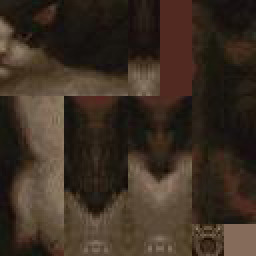
Silent Hill 1 used the same technique, and is also regarded as one of the best looking PS1 games.
While this is the best practice for this kind of look, it’s absolutely not required, Quake 1 used a really loose flat unwrap:
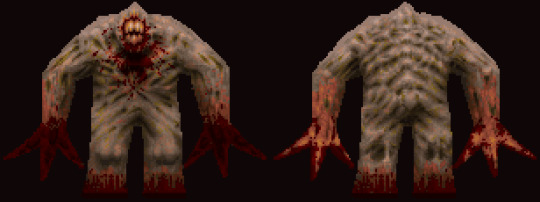
But it’s still looks bloody amazing in the end.
While the topic of using UV Unwrapping for crisper result is endless I’d also love to bring your attention to a certain Jet Set game
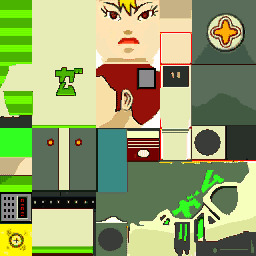
It also uses the same technique as Megaman Legends, but it tops it off with some cel-shading, producing crisp, stylish and iconic look.
Here’s some technicalities: Character textures are usually 256x256 for main characters, 128x128 for other characters, character usually have ~100-120 colors per full atlas. MGS breaks down the atlas into chunks so each chunks is usually 8 colors. So when authoring textures, make us of Indexed Color image mode or Save for Web.
Now let’s move from character textures to
World textures
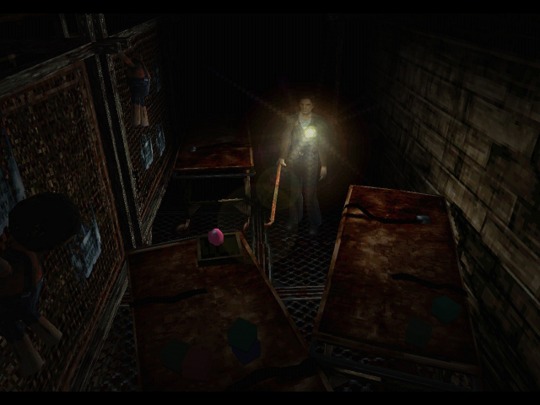
Universally regarded as best looking CD-3D games share the same trait, not only the characters look amazing, but the environments too. Despite hard limitations, the environments look very much affected by lighting. A lot of the times this is achieved with this one simple trick that was only improved with modern technology. That is, a lot of the lighting is baked into the textures
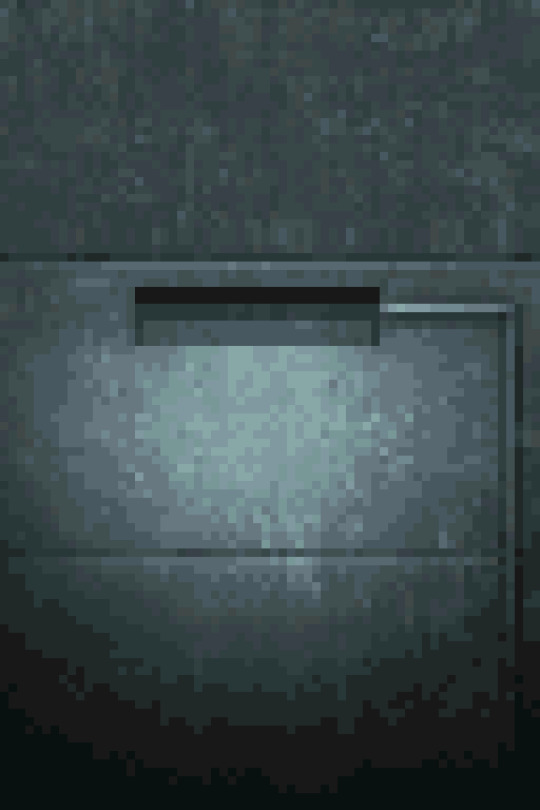
While this limits you on the amount of lighting scenarios or makes you produce more same-ish assets this certainly elevates the look. While nowadays baked lighting is not something that exciting, it’s also being done on a separate “layer”, so there’s no need to make a separate texture for every lighting scenario, however the resolution of a lightmap should not be higher than your texture, to not produce a cheap and uncanny effect. You still want to bake some fake lighting into your texture, which contradicts the rules of PBR, but since you’re not using normal maps, rules of PBR should not apply in the same way.
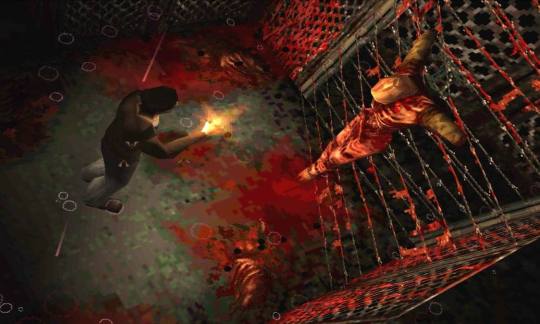
The other important tool to use, is the one we’ve talked about, that is, Vertex Color. Vagrant Story uses to great effect, while it’s environment textures don’t have lights baked, they use vertex color extensively to create a variety of moods and lighting scenarios.

Using best texturing practice, Vertex Color and making sure your lightmaps are matching resolution to your textures will produce the best results.
Now let’s talk why I don’t advise using a lot of normal maps for this style. The simple answer, it’s somewhat difficult to produce a normal map that will work with an unfiltered look, but it’s somewhat manageable to do it if you’re using texture filtering. The issue arises when you try make your normal maps unfiltered, this will make your result either a mess or a bunch of visual noise. If you’re trying to make sharp pixel-perfect textures and then will try to make normal maps to match you’ll get very harsh results. The only way I can see it working somewhat nice is to make a normal map that’s less detailed and then use it texture filtered to give some volume to your objects, while not trying to chase pixel details.
The suggested method is to do a rough sculpt -> bake it down -> use ambient occlusion and other masks to author a texture map with more details. Then use a detailed texture and less detailed normal map for optimal result.
As a closing thought, let’s talk about the
Meshes
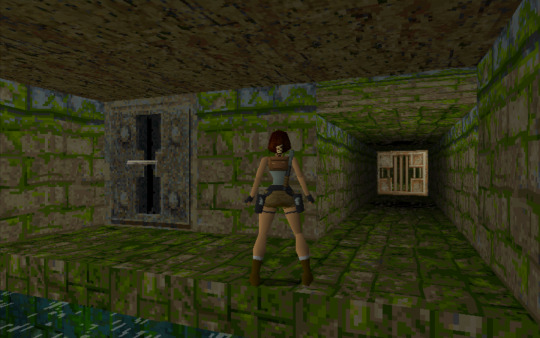
A lot of the time you can visually trace the wireframe of things, this makes it easy to pin the style as “low-poly”, but how lowpoly it really is?
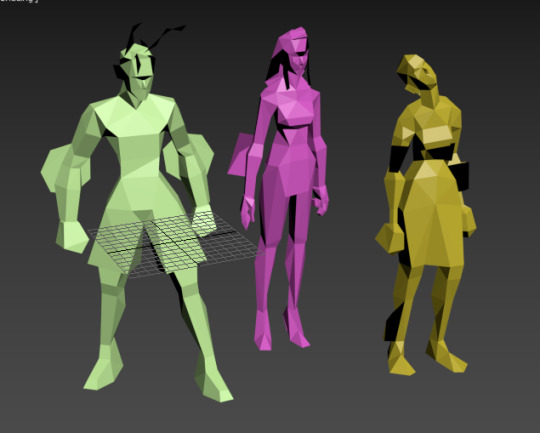
Characters in Vagrant story average 500 triangles per character. Characters in MGS go from ~450 for minor characters to ~650 for major characters. So 500-600 triangles is a solid baseline for a main character in a third person game.
This limit brings out some great restriction for every aspiring 3D artist. You have to know your limb deformation techniques (search-engine “Limb Topology” and browse around the polycount wiki to find some great examples and deformation ready examples), but as you might’ve noticed, some games decided to not wrestle with skinning and deformation and straight up detached the limbs or even made their characters out of chunks. This is perfectly noticebla if you compare the OG Grim Fandango and the remaster, where they botched the shading and you can see the bits in all of their glory.
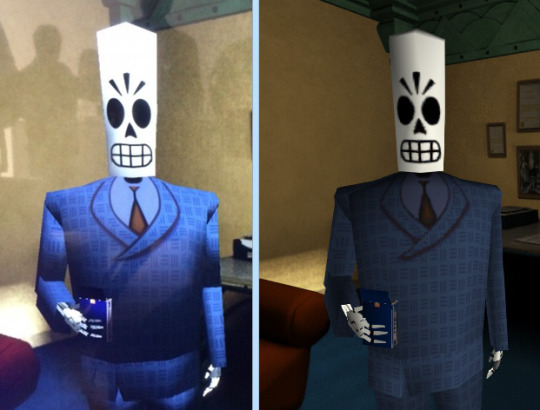
Another easy example is Metal Gear Solid. Characters arms are separate from their torse, but this is covered with other geometry or they’re of the same color and shaded closely.

This way of doing it was used in a number of other games and allows for unlimited range of motion, while not looking weird.
It’s easy to fall into the trap of adding more triangles and loops, but if you’ll follow the rule of “if it doesn’t add to the silhouette, you don’t need it”, you’ll keep to the style. Zoom out often and if an edge doesn’t add anything from the distance and is not critical to the deformation in a character, you really don’t need it.
These principles are so solid they’ve been alive for decades, in fact, one of the best looking PSP games “Peace Walker” sticks to these principles very closely, for example this soldier is just around 1500 triangles
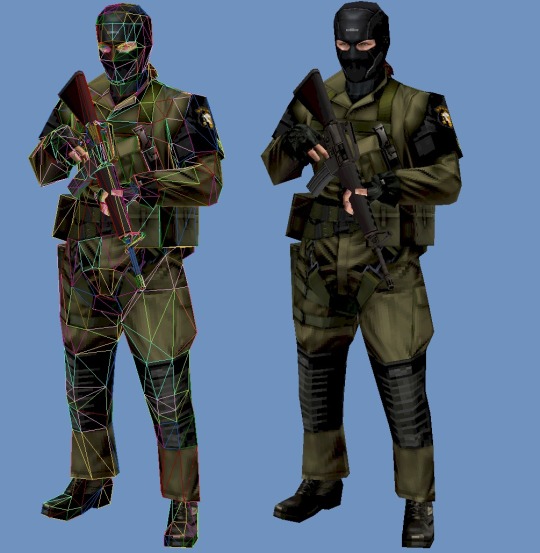
Spilling out of the “low-poly” territory it’s still made with the same economy principles used in CD-3D style, making use of every bit of texture and every triangle available.
Here’s another game of Metal Gear variety, Metal Gear Solid 2 is a direct heir to the design philosophy of MGS1, perfectly pixel-aligned unwraps allow for crisp detailing:
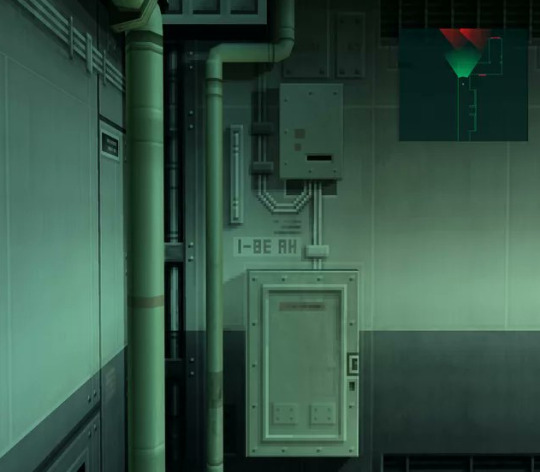
Another honorable mention goes to Animal Crossing on Nintendo 64
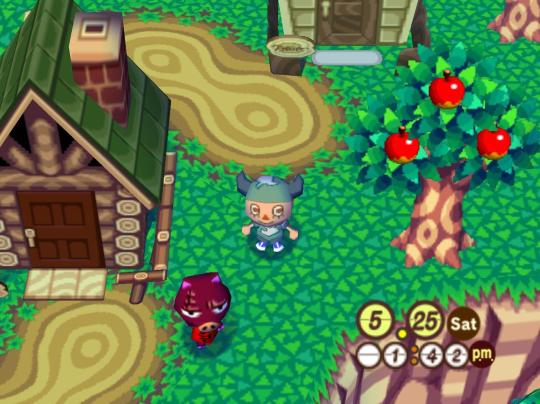
Animal Crossing combines meshes and sprites masterfully, uses pixel-aligned UV unwraps and makes up their own trick when creating landscape.

By unwrapping the repeating texture on each triangle of a hexagon they create these smooth patches of sand without the need for big or unique textures. It’s only 64x64 and 9 colors, but the mileage you can get out of it is insane!
And this honestly sums up the CD-3D style perfectly, it’s the style governed by economy. There’s no need for insane textures for sharp lines, and millions of colors for smooth gradients. Now of course all of these are not rules, but recommendations, you can certainly bend the rules and improve on some aspects. Before we go, here’s some more pictures to get you inspired.
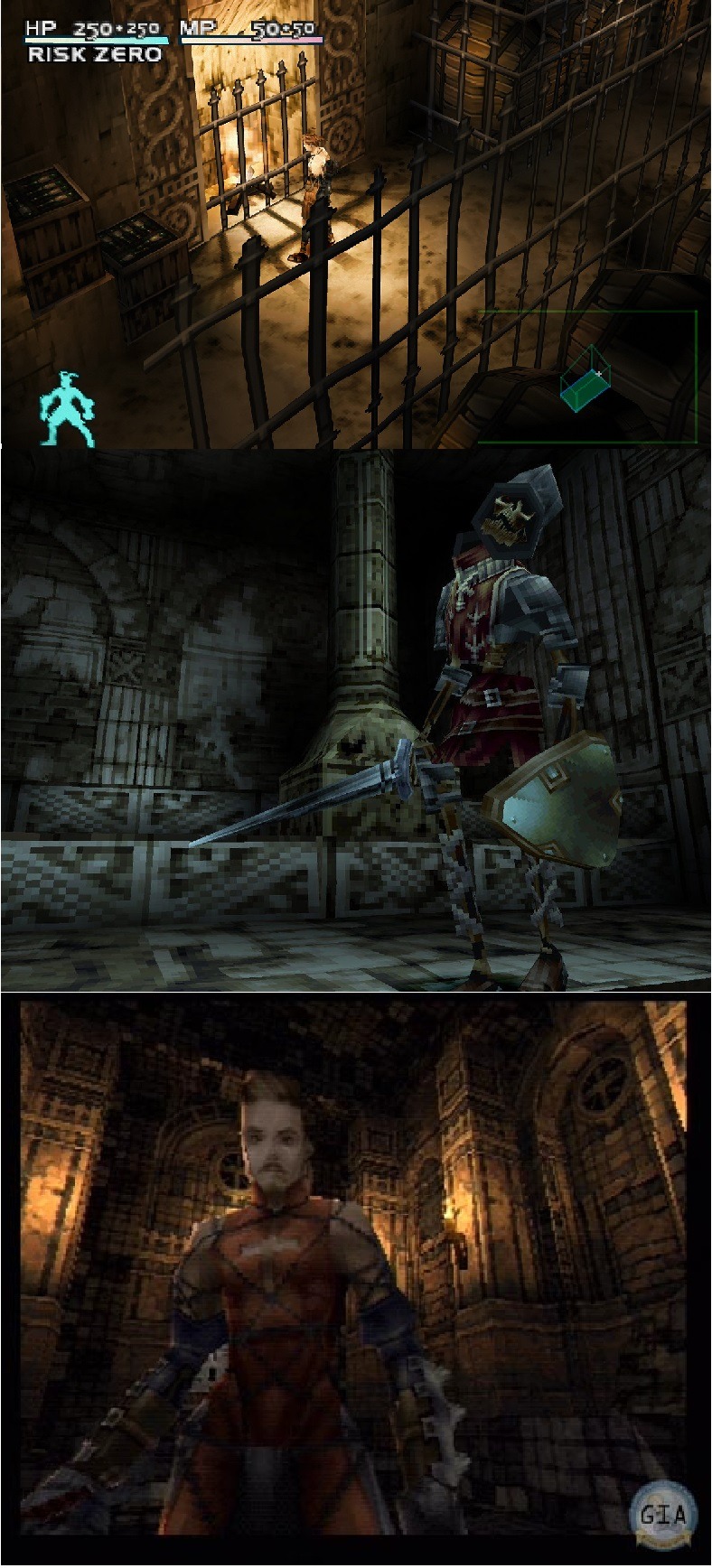
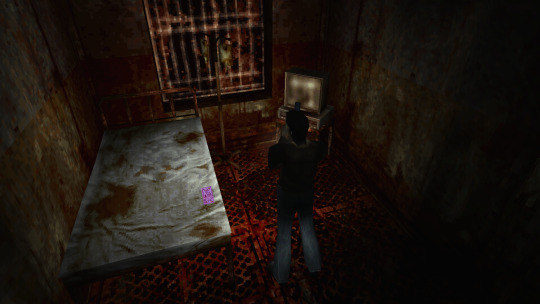
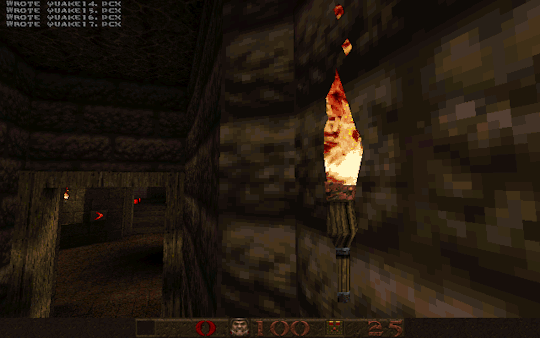
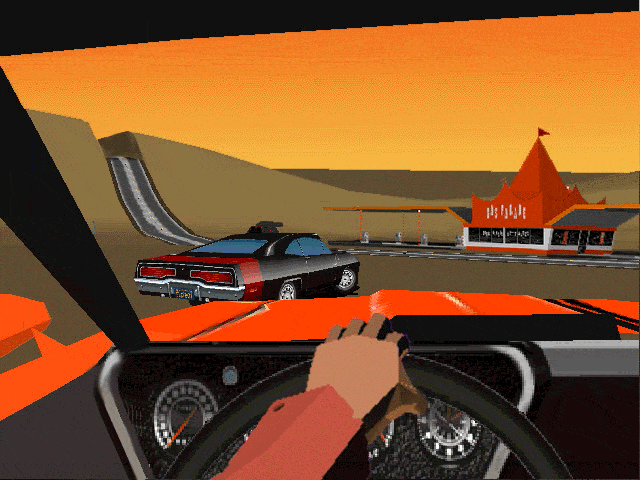
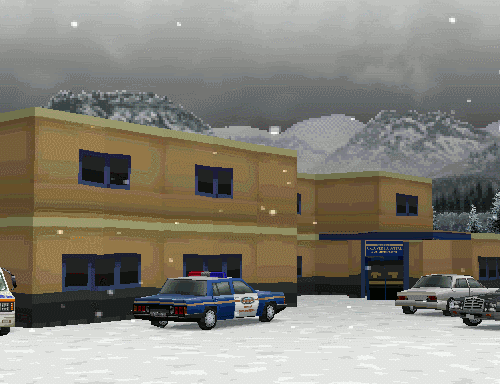
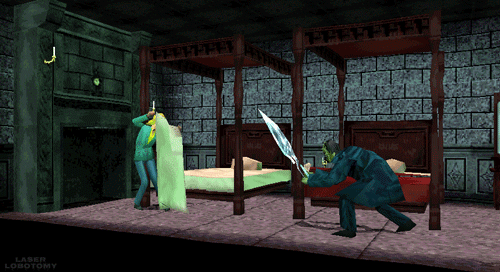
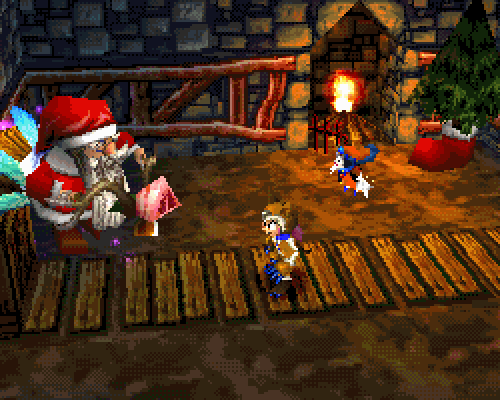
#playstation#psx games#psx#nintendo 64#low poly#3d#retro aesthetic#pixelated#gamedev#dreamcast#cd3d#retro
6K notes
·
View notes
Text
Capsule Reviews, February 2021
Here's some things I've been reading.
The Curse of Brimstone
DC's New Age of Heroes books, emerging from the beginning of Scott Snyder's creative-flameout-as-crossover-event Metal, mostly constituted riffs on Marvel heroes like the Fantastic Four (in The Terrifics) or the Hulk (in Damage). The Curse of Brimstone is a riff on Ghost Rider. It's... uneven. The first volume is generally pretty good, and when Phillip Tan is drawing it, as he does the first three and a half issues, it's gorgeous and unique, when he departs though, the quality takes a nose dive. None of the replacement artists, including the great Denis Cowan, can quite fill his shoes, and the story gets old fast. Guy makes a deal with the devil (or rather, a devil-like inhabitant of the "Dark Multiverse" as a not horribly handled tie-in to the conceits of Metal), realizes it's a raw deal, and rebels. The characters are flat, lots of time is spent with the main character's sister haranguing him to not use his powers (it is, in my humble opinion, something of a cardinal sin to have a character whose primary role is telling other characters to stop doing interesting things), too many potboiler "I know you're still in there!/I can feel this power consuming me!" exchanges, a couple of underwhelming guest spots (including a genuinely pointless appearance by the old, white, boring Doctor Fate) too many flashbacks, and not enough of the action. There's potential in the classic demonic hero rebelling plotline and its link to the liminal spaces of the DC universe, forgotten towns and economic depression, but the wheels come off this series pretty much as soon as Tan leaves. The really disappointing this is that the series is clearly built as an artistic showcase, so after Tan's shockingly early departure, the main appeal of the series is gone and there's nothing left but the playing out of an obviously threadbare story.
Star Wars - Boba Fett: Death, Lies, and Treachery
I don't care much about Star Wars these days, and I think that most of the old Expanded Universe was, as evidenced by Crimson Empire, pretty bad. Death, Lies, and Treachery, is that rare Star Wars EU comic which is actually good. John Wagner writes and he's in full-on 2000 AD mode, writing Boba Fett as a slightly more unpleasant Johnny Alpha (who is like a mercenary Judge Dredd, for those unfamiliar) right on down to the appearance of a funny alien sidekick for one of the characters. The main attraction is Cam Kennedy's art though, along with his inimitable colors: this might be the best looking Star Wars comic ever. The designs are all weird and chunky, with an almost kitbashed feeling that captures the lived in aesthetic of classic Star Wars, and the colors are one of a kind. Natural, neutral white light does not exist in this comic, everything is always bathed at all times in lurid greens or yellows, occasionally reds, and it looks incredible. In terms of "Expanded Universe" material for Star Wars, this hits the sweet spot of looking and feeling of a piece, but exploring the edges of the concept with a unique voice. It's great. I read this digitally, but I'd consider it a must-buy in print if I ever get the chance at a deal.
Zaroff
Zaroff is a French comic (novel? novella?). It's like 90 pages and it delivers exactly on its premise of "Die Hard starring the bad guy from The Most Dangerous Game." It's pretty good. Count Zaroff, he of the habitual hunting of humans, turns out to have killed a mafia don at some point, and after miraculously escaping his own seeming death at the end of the original story, finds himself hunted by the irate associates of this gangster, who have brought along Zaroff's sister and her kids to spice things up. Zaroff not only finds himself the hunt, but he also has to protect his estranged family as they struggle to survive. Nothing about this book or its twists and turns is likely to surprise you, but I don't think being surprised is always necessary for quality. Zaroff delivers on pulpy, early-20th century jungle action, is gorgeously rendered, and the fact that Zaroff himself is an unrepentant villain adds just enough of an unexpected element to the proceedings and character dynamics that it doesn't feel rote. There's a couple of points, ones typical of Eurocomics, which spark a slight sour note, such as some "period appropriate" racism and flashes of the male gaze, but for the most part these are relatively contained. It's good.
Batman: Gothic
Long before Grant Morrison did their Bat-epic, they wrote Batman: Gothic, an entirely different, but then again maybe not so different, kind of thing. It starts off with what must be called a riff on Fritz Lang's film, M, only where that story ends with a crew of gangsters deciding they cannot pass moral judgment on a deranged child-murderer, in Morrison's story they go ahead and kill him, only for the killer to return years later to rather horribly murder all of them as a warmup for a grandiose scheme involving unleashing a weaponized form of the bubonic plague on Gotham City as an offering to Satan. Along the way it turns out that said villain, one Mr. Whisper, is a former schoolmaster of Bruce Wayne's, who terrified the young Batman in the days before his parent's deaths. It's an earlier Morrison story and it shows. Certain elements presage their later Batman work; Mr. Whisper as a satanic enemy recalls the later Doctor Hurt, and the cathedral Mr. Whisper built to harvest souls recalls what writers like Morrison, Milligan, and Snyder would do concerning Gotham as a whole years later.The art, by Klaus Janson, is spectacular. If you're familiar at all with his work collaborating with Frank Miller you'll see him continuing in a similar vein and it's all quite good, even when he stretches beyond the street milieu which most readers might know him from. There's one particular sequence where Janson renders a needlessly complicated Rube Goldberg machine in motion that manages to work despite being static images. The writing by Morrison though, is not their finest. The M riff doesn't last as long as it could, and Mr. Whisper's turn in the latter half of the story from delicious creepy wraith to a cackling mass murderer who puts Batman in an easily escaped death trap feels like something of a letdown from the promise of the first half of the book. Gothic is good, but not, in my opinion, great. It's certainly worth checking out for Morrison fans however, and I imagine that someone well-versed in his latter Batman stuff might be able to find some real resonance between the two.
Green Arrow: The Longbow Hunters
For a long, long time, Longbow Hunters was THE Green Arrow story. It is to Green Arrow as TDKR is to Batman, deliberately so. Mike Grell wrote and drew the reinvention of the character from his role as the Justice League's resident limousine liberal to a gritty urban vigilante operating in Seattle over the course of these three issues, which he'd follow up with a subsequent ongoing. Going back to it, it certainly merits its reputation, but its far from timeless. Grell's art is unimpeachable absolutely incredible, with great splashes and spreads, subtle colors, and really great figure work. The narrative is almost so 80's it hurts though, revolving around West Coast serial killers, cocaine, the CIA and the Iran-Contra scandal, and the Yakuza, and it's hard to look back at some of this stuff without smirking. The story begins with a teenager strung out on tainted coke sprinting through a window in a scene that's right out of Reefer Madness. In the cold light of a day 30+ years later, parts of it look more than a little silly. The 80's-ness of it all doesn't stop with that stuff though, even the superhero elements smack of it. Green Arrow realizes that he's lost a step and has be to be shown a way forward by an Asian woman skilled in the martial arts (recalling Vic Sage's reinvention in the pages of The Question), and Black Canary gets captured and torture off-panel for the sake of showing that this is real crime now, not the superhero silliness they've dealt with before. The treatment of Black Canary here is pretty markedly heinous, it's a classic fridging and Grell's claims that he didn't intentionally imply sexual assault in his depiction of her torture is probably true, but still feels more than a little weak considering how he chose to render it.The final analysis is that this book is good, but it exists strictly in the frame of the 1980's. If you're a fan of Green Arrow, there are worse books to pick up, or if you're interested in that era of DC Comics it's more than worth it, but as a matter of general interest I wouldn't recommend it very highly.
SHIELD by Steranko
Jim Steranko is sort of the prodigy of the early Marvel years, a young guy who came up through the system, blossomed into an incredible talent, and then left the company, and by and large the industry, behind. He would go on to dabble in publishing, work in other mediums, and generally kick around as the prodigal son of Marvel Comics. This collection, of both his Nick Fury shorts in the pages of Strange Tales and the four issues he drew of the original Nick Fury solo series, charts Steranko's growth as an artist. The book starts off with Steranko working from Jack Kirby's layouts with Stan Lee's dialogue and writing, and Steranko might be the one guy in history for whom working off of Kirby's blueprints is clearly holding him back. The first third or so of this collection really isn't much to write home about, as Steranko is obviously constrained by someone else's style, and at the end of the day those early stories still read as somewhat uninspired pulp compared to the highlights of early Marvel. There are flashes though, of techniques and ideas, which foreshadow what Steranko is capable of, and when he finally takes over as solo writer/artist it's like he's been unleashed. He immediately has Nick Fury tear off his shirt and start throwing guys around over psychedelic effects. He writes out most of Kirby and Lee's frankly uninspired boys' club supporting cast, he makes Fury visibly older, wearier, but also so much cooler. It's the birth of Nick Fury as a distinctly comic book super spy.By the time he finishes wrapping up the previous writers' plotline with Hydra and Baron von Strucker, Steranko is firing on all cylinders. By the time it gets to Steranko's Fury solo series, he's somehow surpassed himself, turning in effects, panel structures, and weird stories which make the earlier installment about a suit-wearing Man from UNCLE knockoff and its strict six-panel layouts look absolutely fossilized.I can't recommend this collection highly enough for any fan of the artform, even if the stories themselves might not be everyone's cup of tear. It's truly incredible to watch Steranko emerge as an artist over the course of this single collection. The book itself has a few problems, it's not the most elegantly designed in its supporting materials and index, but the content of it more than outweighs that. It's great stuff.
3 notes
·
View notes
Text
The Falcon and the Rose Ch. 33 - Certainties and Uncertainties

Chapter 1 on AO3 This chapter on AO3 Masterpost here
He was late. It meant nothing, but every heartbeat that ticked by with Alistair still yet to appear pulsed a little more painfully in Rosslyn's chest. He’s late – he’s late – he’s late. She smoothed down the creases in her shirt and turned to pace across the antechamber again; the whirlwind of meetings and catchings-up that had followed her landing had left her almost no time to change from the formal attire she had worn on the beach into something fresh and more relaxed. She remembered picking out the deep blue samite with a flutter in her fingers, thinking the rich hue and the spark of gold embroidery at the hems would go well with her grey breeches and black boots, the flare of the collar modest but dipping low enough to expose the line of her throat. And now Alistair was late and she stood in a lonely hall with only the rattle of the wind for company, feeling like a fool for taking such care about her appearance.
Cuno paid little attention to her souring mood, choosing instead to keep his nose pressed to the crack in the door so he could better sniff the hearty, savoury smells wafting through the broch from the kitchen. A puddle of drool was forming on the floor by his feet. He whined as she passed him again, a polite request for why aren’t we in the hall now, please, but she ignored him. The runner she sent to tell Alistair where to meet had left over an hour before, and had had no reason to be waylaid. She had checked with Brantis, who was busy overseeing the storage of their cargo and hadn’t seen him, but asking his whereabouts from one of the guards like some lovelorn fishwife was a step her pride would not allow her to take. Instead, she lingered out of sight of the main way into the broch, agitated, indecisive about whether to go and look for him, to stay and pace, or to march into her grandfather’s hall as if she never made the arrangement in the first place. Every time she turned in one direction, doubt crept in; the more she paced, the more her mind roved in circles.
What if he’s already in there? it wondered traitorously. What if he never got your message and arrived with Nerlina instead of you?
“Stop it,” she growled at herself.
She had never thought about Alistair with other women. Whether that was due to the other demands on her time, or how slowly her regard for him had grown into something more, it hardly mattered now, when she was worrying at the idea like a loose tooth. Really, it was none of her business how he spent his time; she held no claim on him and it was all but expected for young people, especially among the nobility and especially among men, to dally and gain experience of the world before marriage tied them to a single partner. To assume Alistair was different was… too much like hope. They had been growing closer, yes, and her heart had shaken behind her ribs with how close he stood next to her on the Siren's Call only that morning, how he had leaned down, lips parted slightly as if to ask a question – but she had known flirts all her life. Men like Auldubard and Lucien, who hungered after her titles and the body they could use to claim them; Cailan, whose self-love depended on the love of others.
As she turned and paced again, she realised that wasn’t what bothered her. Alistair didn’t care for titles, or the attention of his peers. Others admired him, some grudgingly, but besides his handsome features, he was intelligent, kind, funny, brave in battle, an endless list of traits that made any time she spent with him feel like the first bathe of sunlight after the chill of winter. He deserved so much warmth, she couldn’t blame him if he chose to take up the offer of an eager, willing body.
She hated the idea of it.
She hated that she hated it. She hated how her imagination twisted into dark spaces that sounded like Alistair, that smelled of him, pressed like his hands on her skin, then shut her out, cut the image to pieces with the barbs of her own abnormality, the disinterest that had never bothered her in her previous life. After all, what did desire matter when her world was horses and dogs and how to better work the swing of her blade against a target? She never expected to feel sick at the thought of Alistair touching someone who wasn’t her.
“Enough!” she snapped, loudly enough that Cuno drew his head away from the door, wagging his tail uncertainly. “Sorry, boy,” she said. “That wasn’t meant for you.”
He whined again, tongue lolling as he tramped towards her with the reminder that whatever heartache existed in the world, there was still food to think about. Scratching at his ears, Rosslyn sighed and cast a glance down the empty corridor, heavy with shadow between the beams of evening sun through the windows.
“We’ll be late if we stay here much longer, won’t we?” she huffed at the dog. “Come on, then.”
The noise of the hall swelled around her as she opened the door. Already, the broch was bursting with people, though more trickled in with every moment, crowding through the double doors at the other end of the room as newcomers recognised friends and family among the throng and went to make their greetings. She navigated her way through with the ease of long practice, heading for the wide, curved table opposite the main door that seated the Storm Giant and his entourage.
The broch was almost as she remembered it, a huge, circular construction under a cavernous roof built of concentric slate tiles, supported by basalt columns. Generations ago it would have been dark and smoky inside, but ventilation ducts had been added to the roof, and the Storm Giant himself had commissioned the glazed windows in the walls – they were draughty in the winter but runes for light and heat had been embedded in the lime render, long, spiralling lines forming protective spells in ancient patterns that guaranteed cheer even through the fiercest storms. At the centre, with five long tables radiating out from it like the pages of a newly opened book, a cauldron bubbled over a crackling peat fire, the embers of which hosted dozens of covered platters being kept warm for the start of the feast.
“Your Ladyship!”
She turned at the voice, and watched as two familiar figures battled towards her through the throng. “Wade?”
“Your Ladyship,” the smith panted, collapsing into a dramatic bow. “I wanted to thank you. The forge here is simply sublime, and the smiths – why, there are techniques mastered here that I have only dreamed of!”
“I’m glad to hear it,” she replied, recalling the numerous arguments about the delicacy of the man's anvil. “I suppose that means we won’t have the pleasure of your company on the return trip?”
“Alas, as much as I am honoured to serve king and country, there is simply too much to learn here to waste time mending dents in tin plates for common soldiery.” He waved his hand dismissively. “It’s all simply too fascinating! I’m on my second notebook already, you know.”
“Really?”
He nodded. “I cannot express my gratitude to you for allowing me to come, Your Ladyship. You have done me such a great service – and Herren, he’s delighted too.”
“Ecstatic,” Herren agreed, with an indulgent roll of his eyes.
“No thanks needed,” Rosslyn allowed graciously. “I’m pleased you find the Alamarri forgers meet your expectations.”
“Maybe not needed, but I –”
“Wade, perhaps we should go and ask Niall to clarify the stages of that smelting technique he showed you earlier,” Herren interrupted. “I’m sure Her Ladyship has other people she needs to talk to.”
Shaking her head as they departed, Rosslyn resumed her path towards the centre of the room, passing Isabela, already swaying, and Morrence, who was deep in conversation with Leliana, with one hand fussing over the new braids at her temple, and did not notice her. Her grandmother was directing the gathering from the raised platform that separated the curving high table from the lower benches. Minstrels would play there once the servers were finished, but for now Lileas Mac Eanraig held the floor, directing her army of underlings with the kind of poise that took a lifetime to master.
“You’re to be seated third on the right, dear,” she said when Rosslyn bent down to kiss her on the cheek. “Did you have to bring that hound with you?”
She shrugged. “He would have been worse fretting in my room.”
“Your grandfather should be here soon, he’s meeting with the other clan lords about tomorrow. Don’t worry about it – or about helping, you’re our guest tonight. Go and rest yourself.”
By the time Rosslyn ushered Cuno under the table and sat down, the broch was almost full. Alistair was still nowhere to be found, but in the lower part of the room, the crew of the Siren’s Call had already cracked open the barrel of ale Eoin had promised them, and were elbowing room next to the members of Fereldan guard, while Isabela regaled them all with an animated story that made her drink slosh over the rim of her cup. The other tables seated the entourages of the other Clayne lords who had come to hear the request from the king. Each clan sported their own colours over mismatched sets of boiled leather armour – elves, humans, and even a dwarf or two among their number – and all seemed uneasy at having to share space with others who, without a common enemy, were reluctant allies at best. But nobody did more than grumble; the punishment for drawn steel in the broch in peacetime was the loss of a hand.
Content to take in the atmosphere and let her mind drift, Rosslyn leaned her chin on her fist, trying to ignore the rumble of her stomach and the dark, insidious thoughts that still lingered at the back of her mind. She was tired, that was all, and once the night was over and she got some decent rest, there would be no room for them. Cuno butted his head into her lap, and when her only response was to absently scrub his ears, he grumbled and pushed his cold, wet nose into the crook of her elbow.
She recoiled and snapped her gaze down. “What?”
He looked up at her with dark, liquid eyes, and when he was sure he had her attention, he gave the barest tilt of his head towards the dish of cold meat pastries already on the table.
"No,” she told him sternly. “You’ll get food, just not yet. Be polite.”
A mournful sigh puffed against her hand, followed by a tiny, hopeful nudge of his chin. Couldn’t she see how he starved?
She scowled at him, but more for form’s sake than anything else. The dog had perfected his begging while still a puppy, sitting under the high table during dinner in Castle Cousland. Fergus had caught her once during the Satinalia feast, sneaking dumplings sloppy with fat drops of gravy, but her father had said nothing and Cuno had only learned that if he stared long enough, she would always, eventually, yield. Cursing herself, she glanced around to make sure nobody was watching, and quickly lifted one of the pastries off the plate and into the snap of triumphant jaws, before rearranging the plate to make it look like nothing was missing.
“But that’s your only one,” she hissed at him as he snuffled on the floor for any missed crumbs.
A hand descended on her shoulder. “I saw that.”
She jumped, heart thudding as Alistair settled into the chair next to her. “I’m sorry?” His voice had been barely an inch from her ear.
“That’s one rather satisfied mabari,” he answered, shifting his gaze to Cuno, who was licking his paws clean.
“You try saying no to that face.” She took him in, ruffled hair and flushed cheeks, his collar looser than it had been when she left him that morning. None of my business.
He tutted, smirking, oblivious. “Brantis was adamant that it was the height of bad manners among the Clayne to take any food from the table before all the guests were seated – something about disproportionate shares?”
“What did Brantis say about being late to parties held in your honour?” The words snapped out colder than she intended, and she had to bite the inside of her cheek when his face fell into a frown.
“I, uh, got lost,” he said.
“I thought Nerlina was taking care of you?”
“She’s serving tonight, so she had to leave,” he replied slowly, wary of the caustic edge in Rosslyn’s voice but not quite sure of the reason behind it. “Poor Giles and I had to find our way here all by ourselves.”
“Surely it’s not that far,” she replied.
“That’s what I said! Apparently, as a prince, I should have been born with an innate sense of direction, but it started getting foggy and after we went to make sure Connor had settled in we ended up wandering halfway to Orlais before we spotted a group of people heading in this direction and decided to follow them instead.” He leaned closer. “I’m… sorry I’m late.”
“I…”
A shadow passed over them, interrupting.
“Now then,” the Storm Giant boomed. “Tha’s the first I’ve heard o’ royalty apologising for their timekeeping. Most expect the world te dance to their tune and never mind the consequences.” He slapped Alistair on the shoulder as he passed and held out the other meaty hand to squeeze Rosslyn’s as the other clan lords filed behind him and took their places at the other end of the table. None of them spared a glance for the two Fereldans in their midst.
“I hope yer rooms are to yer liking?” the Storm Giant asked.
"Uh, this whole place is amazing,” Alistair stammered. "Not quite what I pictured.”
"Ha! And what did ye picture?”
“More sea monsters, I think.” He glanced to Rosslyn. “And more rain.”
“Tch, the storms come in the winter, and the sea monsters, well, ye hope they never come at all.” The old man shook his head. “There’s a fret rolling in frae the north, mind, so ye’d best hope ye don’t get lost again, laddie. It’s a short way to the cliffs and a long drop intae the sea.”
Somewhere on the other side of the broch, a horn sounded. The large double doors closed with a slam and Lileas wove through the last of the crowd scrambling to their seats.
“Your place, Feachar!” she reminded in an exasperated whisper, and with a final wink the Storm Giant left Rosslyn and Alistair to take his seat in the one of the two large, carved chairs at the centre of the curving table. On his other side, the other clan lords settled into place, as cautious with each other as a meeting of feral cats.
Servers entered from a door set off to one side, carrying glazed pitchers that they dipped into the cauldron in the middle of the room. Some went to the lower tables where the guests held out horn cups or clay tankards, while others approached the high table and filled the cut-glass goblets there with steaming amber liquid.
“Spiced honey mead,” Rosslyn explained when Alistair took a cautious sniff. “It’s stronger than it looks.”
Once everyone had been given a drink and the servers had retreated to the centre of the room, Lileas stood and raised her glass, glancing around as the rest of the broch mirrored her, watching expectantly towards the dais.
“This is a marvellous day,” she announced. “This is a day we welcome new friends and old allies, and see the return of one we thought lost to us.” She turned briefly to Rosslyn, who returned the fond gaze with a small nod of her head. “For tonight, we celebrate, and for tomorrow, we look to the future and the renewing of our bonds.”
After a brief pause to allow the murmur of assent to settle, she spoke again, this time a toast in Clayne, her words a melody that wove through the hall and rang in the silence. Alistair couldn’t understand it, but Brantis had drilled the meaning into him so he wouldn’t feel the need to interrupt with questions, and he followed the pattern of the words as she welcomed each clan in turn, then thanked the servers and the cooks and invited everyone gathered to eat their fill. When she finished, he toasted slainte mhor along with the rest of the broch and took a gulp of the mead.
“How do you find it?” Rosslyn asked, chuckling at the way his eyes watered.
He coughed. “I guess you did warn me – it’s got a kick. But it’s nice.”
“Be careful how much you drink,” she cautioned. “It won’t hit you until you try to stand up.”
“You know you sound different here.”
She frowned. “What do you mean?”
“Your Common – you have an accent,” he teased. “Like theirs. Just a little bit.”
“I don’t –” she started, then cleared her throat as she noticed the new broadness of her vowels. “I do not. I don’t. Don’t look at me like that, all smug and smirking like a cat with cream.”
His clever retort was cut short as the servers returned, this time with the platters that had been keeping warm by the fire. Each dish had enough portions for everyone to eat more than enough, and throughout the evening each one would be moved to another part of the room, so everyone could take an equal share in the meal. At the end of the night, the servers would get whatever was left over, as well as whatever choice portions never made it out of the kitchen in the first place. Unlike the fancy meals served at Cailan's table, where each course had a separate flavour palate, here sweet and savoury were mixed, so roasted meats and cheese were set alongside puddings and spiced fruits, with so much choice he barely knew where to start.
Rosslyn laid a restraining hand on his arm as he reached for a dish of small birds glazed in some kind of sauce.
“I wouldn’t, with that one,” she said.
“Why not?”
“It’s gannet.” When he looked at her blankly, she shook her head and huffed. “You know that smell you were complaining about at the docks when we were stuck in Invermathy?”
“Yeeees…”
“Imagine putting that in your mouth.”
He pushed the platter away. “Ah. An acquired taste then?”
She let go of his arm. “Not quite. It’s more… tradition. The Storm Islands weren’t always as prosperous they are now, and people had to make do. Keeping gannet on the table is a reminder of where the people came from, so their hubris doesn’t anger the gods.”
“Aye, and te catch out unwary landlubbers who want te try it.” Eoin pouted at them both from further down the table. “It’s nae fun with you around, lass.”
“Drink more then,” Rosslyn retorted, smirking.
Eoin stuck his tongue out at her, but toasted her nonetheless and downed the contents of his glass. From the steadily rising noise level in the broch, others had the same idea. As the evening wore on, the dishes rotated and people started moving between tables to see old friends, and the Storm Giant boomed louder and louder to his conversation partners with each gulp downed. Alistair failed to notice most of it. In between conversations with their other closest neighbours, Rosslyn had taken to educating him on nautical terms using cutlery and table fittings to illustrate her points, while every now and then throwing choice cuts of meat to the dog under the table. As the drink disappeared, she started giggling and leaned in closer, and more than once he caught her staring fascinated at different parts of his face. The room grew very warm.
“And that’s what green-to-green – Cuno, no – spit that out!”
She dived under the table to wrestle with her dog for an unexpected chicken bone, leaving Alistair a moment to fully appreciate the soft, fuzzy feeling vibrating through his skull. Rosslyn’s hair gleamed in the torchlight where it tumbled down her back; he wanted to touch it. Trying to puzzle out the exact reason why doing so would be a bad idea, he brought his glass to his lips and was disappointed to find it empty. He looked up to flag down a server, but Nerlina had already appeared at his elbow as if she had stepped through the Fade to reach him.
“Refill?” she asked sweetly.
He offered his best grin in return. “Please.”
Rosslyn, finished making sure her dog wasn’t about to choke, poked her head out from under the table again. The wine warming her veins chilled like a breath of cold air across the back of her neck, and all the worries she had shoved away surged back to the forefront of her mind with the sight that greeted her. Alistair sagged tipsily against the table, his eyes caught on the alcohol slowly filling his glass – or perhaps on Nerlina, who was bending over far more than necessary for a half-emptied pitcher of mead, in a very tight bodice with a very low neckline.
“I don’t remember if I thanked you for earlier,” he said, still wearing his cheesy smile as he toasted her and drank.
Nerlina tittered. “It was fun,” she told him, winking as she turned away. “And if you like, I could help you have even more fun later.”
Alistair choked on his drink. He coughed, fumbling to set the glass back on the table without spilling as the alcohol burned in his lungs and up his nose, but Rosslyn, mind frozen, barely noticed. Heat flooded her face. Her pulse threaded through her ears, mortification fusing with whatever force was crushing through her chest, scalding behind her eyes. She stared at Alistair, watching him splutter from far outside herself. When he turned to her, eyes wild with panic, she flinched away, catching her gaze on a stain in the tablecloth.
I should have known. Only the strictures of her noble training and adamant self-restraint kept her from fleeing right there, the knowledge that to leave now would cause insult to her hosts and possibly unwind all the good they meant to do for the king. Everything was too hot, too loud – she buried her fingers into Cuno’s ruff, the coarse fur against her skin the only anchor that kept the world from keeling over sideways. Her blood pulsed like mercury through her chest. I have been an utter, utter fool.
“Rosslyn –”
She pulled her hand away from him, reached shakily for her drink. “It’s not my business.”
“No, you don’t –” He steadied himself. “I – That’s not what it sounded like. At all.”
“I’m here to see we get our ships,” she growled, willing the alcohol to work faster. “Whatever else happens is…” She turned with a smile, brittle even to her herself. “There’s no shame in seeking company.”
“And you think I want Nerlina’s company?” he demanded. His gaze followed the arch of her throat as she tipped back her glass to drain it of its contents. “Rosslyn, no. That’s – I mean, not that she isn’t attractive, I suppose, but –” He blanched. “Maker’s breath… I never considered – I mean, I have considered company in more, uh, general terms, of course, I just…”
Something in the awkward shift of his eyes, the tick rubbing at the back of his neck, pulled Rosslyn back into the present moment. Her heart fluttered at the suspicion rising in her mind.
“You’ve considered it?” she repeated. “Does that mean you’ve never…?” Her lungs constricted.
His eyes blew wide and he leaned away. “Never what? Never had a good pair of shoes?”
“You know what I mean,” she insisted, turning in her seat.
“I’m not sure I do. Have I never seen a basilisk? Ate jellied ham? Have I never…” He glanced about, looking for inspiration, “…licked a lamppost in winter?”
“And now you’re making fun of me.” With hope sinking like lead in her stomach, she turned away again, shifting as far away from him as she could as her mood crashed down and her teeth gritted against the sudden urge to cry.
He caught her fingers before she could fold her arms over her chest. “Make fun of you dear lady?” he teased. “Perish the thought.” The earnest look in his eyes was an apology. He swayed into her line of sight, lowering himself so she had to look down at him as he wrapped her hand in both of his, the world now disappeared behind a tipsy haze and the knot of tension twisting between them.
“Tell me,” he breathed, with a ghost of a grin, “have you ever licked a lamppost in winter?”
“I…” Her memory flashed, to all the conversations between Oriana and the other ladies that left her out; how at court she was teased for her obliviousness, then later reassured an inclination would grow in time, and then later still told in no uncertain terms enjoyment of the act was not required for the getting of heirs. Everyone had always seemed so interested in sex, in the wanting and the expectation, and for the longest time she had thought them all merely bluffing, exaggerating what they felt because that was what was done, until the day she realised the bemusement was hers alone, that others desired in a way she did not, that she was locked outside a gate that had no key.
She couldn’t tell him any of this. Not here, in a public hall rife with interested ears – and how could she do so anyway, without having him turn from her to someone with more than a detached curiosity in that kind of intimacy? What had her life been without him in it?
“No,” she said, dropping her gaze to stare at the point of Cuno’s ear. “I haven’t.”
Alistair squeezed her hand. “Good. I hear it’s quite painful. First you get stuck, and there’s pointing and laughing, and then you become known for miles around as the idiot who got their tongue frozen to a metal pole.”
She couldn’t help the lift of a smile, though the back of her throat still burned. “Is that a warning from personal experience?”
“You wish – some of the village boys did it on a dare once. I myself have also never done it.” His gaze faltered, voice lowered as colour climbed in his face. “That. I know it’s somewhat, uh, expected, but… I don’t know, maybe it’s because of where I came from, but I’ve always thought it would be better to – to be with a person you wanted to be with. That probably doesn’t make any sense.” He started to pull away, but Rosslyn held tight to his hand and didn’t let him.
“I think it does,” she said in a small voice. “To be with someone you trust, when it’s an experience shared, not something taken.”
They were sitting very close now. When Rosslyn glanced up, her breath stilled, caught in the way the torches illuminated beads of gold and amber in Alistair’s tawny eyes. She watched as his gaze trailed away from hers, following the movement of his free hand with rapt concentration as he gathered a stray wisp of her hair and pushed it behind her ear.
“That’s it exactly,” he murmured. His thumb lingered on her jaw. “Have you… never found anyone like that, my lady?”
Her smile turned wolfish, her cheeks warming with colour. “Well… maybe I just never found a lamppost worth licking before.”
“Maker’s breath.” He reeled away, slumping backwards so his head hit the backrest of his chair with a dull thud, his eyes squeezed shut and his lips drawn inward between his teeth.
“Alistair?”
The concern in her voice brought a giggle bubbling up his throat. The alcohol singing through his blood meant the sound built until he couldn’t stop. In short order, the infection spread to Rosslyn, who doubled over, laughing at nothing until all the breath was driven from her lungs and the awkwardness of their conversation passed into base hysteria. It seemed most of the other guests were too deep in their own cups to notice the exchange, and neither of them felt much like letting go of the other’s hand.
“Here, let me,” Alistair said when she reached for her glass and remembered it was empty. With a slightly unsteady grip, he tipped half of his own drink into hers.
“Thank you.”
Further along the table, the Storm Giant banged on the table with his fist. “Is this a celebration or a wake?” he cried. “We need music! Cuilean, din’t ye say ye brought an Orlesian songstress wi’ ye?”
“Leliana is a Chantry sister,” Rosslyn answered, drawn out of her contemplation of the thumb stroking across her palm. “But she has a fondness for folk tales if she’s in the mood to share.” She beckoned to one of the servers and sent him down into the crowd to where the redhead sat among the Highever guard, and watched as she picked up her lute from under the bench and glided into the empty space in front of the fire pit.
“What song would you have of me, my lord?” she asked the Storm Giant.
Lileas answered. “A good bard knows how to read a room, does she not?”
With a tiny, dimpled smile, Leliana bowed. “I am not a bard, but I will do my best. Perhaps something old to help our wonderful meal digest?”
The broch fell silent. Somebody dashed in with a chair so Leliana could sit, then retreated into the shadows by the kitchen door. She plucked a few notes on her instrument, testing the tuning of the strings.
“I learned this song from a Dalish woman when I was at Halamshiral with my patronesss,” she told them all. “She could not sing well herself, but she liked my voice and missed the old songs of her people, so she taught them to me so I could carry them forward. This one is called ‘Ame Amin’, and it is the lament of an elvhen knight upon witnessing the fall of the Dales.”
“Bloody odd subject matter fae a Chantry sister,” the Storm Giant grunted. His wife batted him on the arm.
Rosslyn had never heard Leliana sing. She knew the older woman had the ability, but hadn’t expected the crystaline quality to her voice as the first few notes climbed through the hall. It purled like the waves of the sea, speaking of loss and renewal, compelling sadness and wistfulness despite the foreign nature of the words. It filled the curve of the vaulted ceiling and returned strange, nascent echoes that isolated and magnified the cadence until everything else fell away. As the servers quietly tidied away the dishes, the cares of the day seemed to sneak in, weighting her limbs with a dull fatigue that sent tingles to the ends of her fingers. She only realised she had closed her eyes when a slight nudge against her shoulder startled her out of her doze.
“It’s getting late,” Alistair murmured as the final notes of the song dissolved into the air.
“Are you telling me it’s bedtime?” she asked through a yawn. “I haven’t had a bedtime since –” The memory shot through her like a cold knife in the ribs. She had spoken those exact words at Glenlough, with her father. Almost the last thing she had ever said to him. “I suppose we’ll need clear heads for the morning.”
“I think I’ve had too much mead for that.”
She chuckled, hiding a second yawn behind her hand as she toed her boot against Cuno’s side to wake him up. Around the hall, others were getting up as well, pleasantly full of food and drink, to begin the long stagger back to cot or hammock.
“Would you mind if I came with you?” Alistair asked as she stood and stretched.
“The night isn’t entirely over yet,” she answered, flashing him a wry grin as more minstrels appeared on the dais. “But if you’re worried about getting lost again, then it’s probably better if I let you tag along.”
“Your Ladyship has such a magnanimous attitude.”
With a tired chuckle, she led the way towards the door that opened onto the courtyard, her fingers buried in Cuno’s ruff to combat the sway of the floor. She paused to bid her grandparents goodnight, like she was a little girl again, but she missed the way the Storm Giant’s eyes narrowed when he spotted Alistair rising to follow her.
They left a comfortable space between them and walked in silence through the night. The cool air shook off some of Rosslyn’s tiredness, but in the brief few hours since the horn had sounded to eat a thick fog had rolled in off the sea, leaving them in a formless, directionless void. The dog disappeared on the scent of some small animal, his snuffling weirdly magnified in the still air, and returned as a patch of heavier shadow in the darkness.
“Here we are, safe and sound,” Rosslyn announced as the round bulk of the guest house materialised through the fog. A pair of whale-oil lamps flanked the low door, casting a greasy pall over their faces as they crossed the threshold. The space inside was dim but warm, laid out in the same wheel-like pattern as the broch, except here each wall radiating out from the communal space in the centre enclosed a room, with another level above reached by a sturdy wooden stairway.
“It’s very cosy in here,” Alistair commented as he followed her to the bottom of the stairs.
“It is. And I suppose this is good night.” Cuno had already padded up to her room, but tradition forbade men from going beyond the ground floor.
Alistair tugged at her fingers. “Just a moment. ‘Good night’ is hardly a fitting farewell to the woman who brought me safely through the perils of a strange land, beset by shadows and mist.”
“It was thirty feet,” she protested, allowing him to close the last casual space between them so she had to tilt her head back to see above his chin.
“Oh hush, I’m trying to be gallant.”
“Are you? In that case, I apologise.” When had he slid his arm around her waist? “Go on.”
He still had hold of her fingers. Her palms were calloused from swordwork, the knuckles flecked with scars, but the skin on the back of her hand was so soft he could spend forever touching it.
“You look beautiful,” he murmured. “I’ve been trying to work up the courage to tell you all day.”
He was so close, filling every sense until she was left dizzy. The small part of her mind not weighed down by alcohol or warmth or the scent of pinesmoke knew she ought to reply, to at least express gratitude for the compliment, but it faded away as she watched him lean down in order to leave a courtly kiss on her hand. His eyes slipped closed. She wanted more. She drew her hand back, amused when he followed blindly, and when he was close enough, with wine and anticipation fizzing through her blood, she caught his cheek and pressed her mouth to his. The muscles under her palm tensed, and for an instant she feared he would pull away, but then he pushed forwards, folding one arm more fully around her waist while the other curled along the line of her jaw. He tasted of honey. She wound her fingers into the hair at the nape of his neck and pulled him forward, matching his eagerness, moulding to the solid shape of him until they overbalanced and had to stumble against the wall to catch themselves.
“Careful,” he breathed, still with his lips at the corner of her mouth.
When she turned into the feeling, he responded, kissed her with light, lingering touches until she was giggling again and had to hide her face in the crook of his neck. Tangled so close, in the dark with silence draped over even the crack of the fire, the divisions between their two bodies grew indistinct, irrelevant, and she could have stayed forever wrapped in it, giddy enough to tremble with the reassuring beat of Alistair’s heart beneath her ear.
“You know, I'm even more glad I passed on the gannet now,” he said, from somewhere above her. “That – that wasn’t too soon, was it?”
She pulled back. “Was it? I’m the one – I kissed you first.”
“You did, didn’t you?” he agreed, delight evident in every line of his face.
“What,” she teased, “were you not paying attention?”
“Oh, it’s not that. I was just wondering…” His voice dropped to a low rumble that stroked a shiver up her back. “Is this the part where I get to do the same?”
Uncertainty crowded back in, warring with her joy. “Only if you want to.”
For a brief instant, it looked like he was going to say something clever, but his gaze dropped to her mouth and with a dismissive shake of his head he leaned down again. The movement was deliberate, measured, the slant of his mouth promising more with everything it held back, and when his tongue peeked across her lips, her knees started shaking.
“I definitely want to,” he told her.
“That’s good to know.” Without quite meaning to, her gaze shifted to the darkened hall around them, with the peat fire burning low in the central hearth. “It’s late.”
“Not for a little while yet, surely?” he tried, with a hopeful quirk of an eyebrow.
“I wish I could say so. Good night, Alistair.” She rose on tiptoe and pressed one final kiss against his mouth, only for him to catch her with another.
“Good night.”
Shaking her head, she untangled their arms, her touch lingering until she stumbled on the first stair and decided to pay attention to where her feet were going instead. She didn’t look back until she reached the mezzanine, and her heart fluttered when she found Alistair still rooted in place, his expression split in a beaming smile she couldn’t miss even in the dark.
#dragon age#dragon age: origins#dragon age au#alistair theirin#alistair x cousland#cousland#rosslyn cousland
12 notes
·
View notes
Photo







also, i tried a new digital painting technique, since it’s been a while since i’ve done it, so here is the process i used!
1. sketch and flat color (on different layers so that i can easily remove the sketch lines)
2. RENDERING (all on one layer, because i’m sick of working on a billion disorganized layers with different chunks of the painting on each layer. it went really smoothly, so i’m going to do this more often in the future)
3. at this point i got afraid because i wanted more contrast but i didn’t want to ruin all of the more careful rendering i did, so i duplicated the layer and then made new light and shadow layers to go over it, then did sort of rougher light and shadows and tried to blend them in
4. i merged the new light and shadow layers down and added a Curves adjustment layer in order to increase the contrast again, because it was still pretty flat looking
5. flat color- i wanted to try letting the colors bleed slightly, so that they would look more natural, like they’re reflecting off of each other. I think it turned out alright!
6. this took a while to figure out: i wanted the light and shadows to be colored, so i made two overlay layers with neutral, lower saturation colors (pink for the shadows and blue for the highlights) and masked the color onto the shadows and highlight areas, respectively
7. added one last overlay layer on top with a low opacity radial gradient from blue to pink to make it pop a little more, and also added a bit of yellow to the highlights because they looked kind of weird as straight blue. also i threw a gradient onto the background that’s not super great looking but you win some, you lose some i suppose.
overall though, i’m gonna play around with this stuff again next time i want to digital paint something! this was a nice break from all the other stuff i’ve been doing lately, and hopefully now i feel comfortable with drawing on my tablet again
#long post#this probably isn't a great tutorial but i have fun flipping between process images#see; SCAD has cintiqs and so when i was working on my film at school; i got used to that#so i have been wary to try lineart again on my tablet and its been preventing me from getting stuff done#so hopefully this broke me out of that and tomorrow i can try a drawing with lineart and see how that goes
18 notes
·
View notes
Text
Random!
Rules: Pick 15 people and randomize them here. Make a new post and fill in each section with the number corresponding to your results. Feel free to tag anyone!
I got tagged by @wonky-glass-ornament @cavern-of-bells and @dear-mrs-otome (see their hilarious results HERE, HERE, and HERE
1. Mom or Dad: Hideyoshi – Growing up with Hideyoshi means growing up ever so slightly paranoid. Sure, I get away with stuff, but, in the pits of my filthy soul I know he knows. Little things, like, the fact there’s a scarf stuck in the tree by my window that I sneak out from. Blown up there by the wind? Left behind by accident last time? I THINK NOT. That said, definitely a Fun!Dad but also a big believer in letting lessons be learned – though he gentles them where he can.
02. Sibling: Mitsuhide – best big brother. He tries so hard to be a Good Example and is the one who Frowns when Hideyoshi is like sure sweetie you can have cheese for dinner because no you are growing you need vegetables too. Given our equally stubborn natures, for a long time I thought we’d never get along – but after finally watching him lose his cool in my defense, I realize we’re alike in every way. He is MY precious brother and if you try and hurt him I will come after you okay. Dinner table haiku competitions are a thing.
03. Grandma or Grandpa: Kenshin – the most indulgent grandpa ever. Spoils me ABSOLUTELY ROTTEN. The sort of grandpa who is like “let’s go on a trip I found the loveliest place” and forgets that school starts on Monday so when we get back (on Thursday) there’s some ‘splaining to do.
04. Haunts you: Ieyasu – NO BUT HE IS THE BEST GHOST EVER. He is such a BRATTY poltergeist. Never has anything nice to say AND YET, he’s reliable. I always know he’s going to be there and I can tell him about how awful my day was and he will tell me exactly why I’m being stupid for being upset over it and perversely it helps. He’s like having a housecat – Super Obviously Ignores Me if he feels slighted. He has been in a Mood since I got a boyfriend he does not in any way approve (not because he has standards for me or anything – he’s shocked anyone would date an idiot like me, of course, he’s just annoyed that I managed to find someone—in his words—even stupider than me to hang around)
05. Boyfriend or girlfriend: Yukimura – d’aaaaw. I had to semi-trick him into asking for my number (I’m pretty sure Saizo knew exactly what I was doing, oops) but, hey. He still blushes adorably when I climb in his lap, but his arms are always open for me and I appreciate knowing that to the depths of my otherwise miserably unromantic shriveled little heart more than I can say <3
06. Your ex: Inuchiyo – MY SWEET PRECIOUS PUPPY. It was too much like dating my brother. I mean not my actual brother, he and Mitsuhide are pretty different (though not as much as I once thought) but, I just couldn’t do it. He agreed it was weird, but his voice sounded a little high when he did…
07. Your best friend: Tadakatsu - YESSSS my sweet, supportive, amazing bestie. This boy HAS MY BACK and he’s always there for a hug when I want one. I really want nothing more than to set him up with someone who will appreciate him for how wonderful and sweet and good he really is and take care of him in all senses of the word.
08. Proposed: Umeko – SADLY we were both three sheets to the wind after commiserating over her last breakup when she grasped my hands with teary eyes and said that I would clearly be better for her than any of her exes.
09. Your boss: Nobunaga – oh lord. I get fired like once a week for screaming back in his face AND YET somehow the paperwork never actually gets filed and I am expected back in meetings the next day. An exhausting marathon of work with a sprinting pace. Wholly support his refusal to yield to the whims of a Board of Directors – he bought out the whole company himself, so he answers to no shareholder and no board, and, as HORRIFICALLY EXHAUSTING as he is to work for, and as much as he expects nigh impossibly high standards out of them, if you can skim those standards with your fingertips and hang the heck on, he is very good to his team.
10. A random person you meet at a bar: Masamune – he was quiet and didn’t look like he wanted to be bothered, but, we both had the same obscure cell phone charm character and I just couldn’t help gushing about it. He looked a little startled when I approached him, and he didn’t say much, but when he got up to leave he gave me a very small, very soft smile and I was ultimately glad we could chat, however briefly.
11. Your rival: Yuki – luckily she has a capricious sense of humor or my tush would be totally dead. As it is, one super embarrassing board meeting a la truth potions means that these days pretty much the only thing I drink anymore is water straight out a tap – surely she can’t spike that, right?! Is there some possible foe yay going on? Yes.
12. Gave you your first kiss: Saizo and boooooy nothing’s lived up since. It was an education. Literally – payment for educational services rendered was given in the form of dango and babysitting Yukimura for a few days. Completely worth it.
13. Drunk and singing karaoke with: Kojuro it was a bit of a mix-up – the room I reserved for a party got double-booked. Luckily, he is a gracious man, and Shigezane suggested we combine the two. Maybe a bit rowdier of a birthday than Masamune was used too, but even he smiled at how (adorably) off-key Kojuro can be. Everyone gets home safely, with taxi services paid for.
14. Played seven minutes in heaven with: Kotaro. Completely terrifying – luckily that’s kind of a thing for me? I don’t really mind if my thrill comes from good technique or, hey, fear for my life. I’ll take it. But I’ll still be a teensy bit relieved when the door flies open again, and with a vague smile I’m gonna dodge handing out my number.
15. Gave you your favorite dessert: Mitsunari. Not because he was thinking of me, and definitely not because he felt sorry for me or cared or ANYTHING STUPID LIKE THAT it’s just common sense that sugar can provide an energy boost (no he doesn’t care that I was feeling a little tired, he just needs me to get my work done because Hideyoshi will be more at ease if it is of course) just shut up and eat it and feel better okay.
I TAG UNNGH everyone do it, this is lovely. BUT. @quincette @belxsar @demonintheally @mollymare and @pseudofaux AND ANYONE ELSE WHO WANTS TO DO IT
It was honestly hard to just pick 15! So many good characters
#slbp meme#slbp#slbp random#THIS IS WHY I NEVER TAG ANYONE IN THESE#I WANT TO TAG EVERYONE#I hope you don't mind if I tagged you#and if I didn't and you want to be I probably wanted to I just had to stop myself ;.;
18 notes
·
View notes
Text
Digital Walkthrough – Dragon Thrall
From April 2007. Nowadays I tend to completely work in Photoshop CS, but many of the techniques are the same no matter the software. This is a fairly rambly post as it's taken from notes I made while painting. This is NOT the way I work for client work!!!!! This was a personal face study that I built a painting around. I now plan things!
This painting was completely unplanned. It started out as a gothic vampire piece… ended up something completely different! These are some of the notes I posted to LiveJournal while painting, and subsequently featured in February 2008’s EMG-Zine.
Normally it’s a good idea to plan a painting. You should work out your composition details, color schemes, lighting sources and other technical details, but sometimes it’s more fun just to get in there and paint! Some of my best paintings have been the result spontaneity, experimentation and sheer desperation to fix a mistake! It started out as an exercise in skin tones, turned into a modern vampire piece and ended up having dragons! Hopefully you’ll learn a few things about why planning can be useful, as well as why it can also be fun to follow the rambling path your muse sets you on!
A few thoughts on digital art and painting software:
There is a plethora of information on digital art available online. This article isn’t a basic A+B=C tutorial. It’s more a discussion on the creative process I employ while painting digitally. For this article you will need a basic understanding of Adobe Photoshop or similar software and have access to a digital graphics tablet (or be really good with a mouse!). Access to Corel Painter would be handy too, however you can get similar effects in Photoshop with a bit of experimentation and practice.
I use Photoshop and Painter together. I’m not going to argue about which one’s better – because frankly it’s like comparing a banana with a pineapple! They’re both graphic software programs, however they’re designed for completely different purposes. Photoshop is an editing tool which you can paint with. Painter is purely designed for painting, with a few editing tools thrown in. With each new incarnation the blurring of these definitions decreases. I’m sure that if you experimented enough, you could probably get the result you want in either software.
Setting up the canvas
I started the painting as an exercise in skin tones. I hadn’t worked in Painter for a while and thought it was time to flex those painting muscles again. Unfortunately some versions of Painter can cause files to corrupt in native Painter file format (pre-version 5), so I recommend that you either create your file in Photoshop first, or save the files in Photoshop format (*.PSD extension)
Just like painting on paper or canvas, a blank canvas can be very intimidating. I always lay down a color of some type on the background layer just because it’s something to start with. When you plan a painting it’s a good idea to think about the lighting in regards to the background. If you are painting a scene which is sunny, then a warm yellow or warm blue might be a good choice. If you’re thinking about a night scene then start with a dark indigo or a cool blue. If it’s in a forest you may want to think about a green, while a snow-filled landscape may require a pale lavender-blue color.
As I said, this was a practice for skin tones so I decided on a dark maroon to pick up the dark tones in the hair (I’d planned on painting a redhead). Most of the time I apply a lighting filter, or a gradient to make it more interesting – kind of give it a focal point.
The first character I sketch on a separate layer to the background/ canvas. When painting directly onto the computer with a graphics tablet I generally start with a few lines to work out the placement of the head, eyes, mouth, nose and ears. I then work out a few ‘base’ colors that I will use for the skin. I place ‘dabs’ of the color I use regularly somewhere on the canvas:
A mid pinky-brown color – the base color
A pale yellow/ pink color for highlights
A redder tone of the base color used for cheeks and nose area
A purple version of the base color for shadowing
A darker brown-pink for the deep shadows
A light pink-purple (not shown) for blending in areas where the skin is fine and the veins show through.
In later versions of Painter you get a tool called a ‘mixer’ where you can place dabs of colour and create variants using the mixing tools. If you are having difficulties with colours try using the colour picker on real photographs and see what ‘real’ skin colours look like. You’ll probably be quite surprised!
Once I have the colours and some lines down I begin to paint. For this face I used Painter’s digital Airbrush set at about set at about 10% opacity, 100% Resat, 0% bleed and 0% jitter. I vary the brush size from about 150, right down to 2 or 3. I spent about 2 hours to get to this stage.
A few notes on skin tones:
Every person has a different skin tone and texture – we’re not all a standard ‘flesh tone’, straight from the tube
Men and women also have slight variations in colouring
Different nationalities have different skin tones. Some have ruddy complexions, others a yellow undertone, while some have dark skin. Study photographs, place them next to each other and note the differences
Skin tones reflect the colours around them. If you are wearing a purple shirt, you will get some reflection under your chin depending on the lighting. If you are standing next to a yellow wall, the side facing the wall will reflect the yellow.
The colour of the lighting impacts on skin highlights and shadows. If you use a yellow light, the shadows of the skin are generally the complementary colour (in this case purple).
One thing I remember reading (Don Seegmiller in his book Digital Character Design and Painting) was the fact that the strip across the nose section of the face is pinker than the rest, while under the eyes should be purplish-blue as the skin is so delicate here. I recommend his book for color theory, regardless of the painting medium! In fantasy art, the ability to create convincing skin tones in important, particularly if painting something like a Drow, or even an alien with blue skin
Adding the hair
Hair is basically made from 4 colours which I vary the opacity and size of the bush. The illustration below shows the four colours and the way I build up the hair.
A mid tone
A light tone
A dark tone
A very light tone for the highlights
Why having no ‘theme’ for a painting can be a problem!
Like most sketches where I don’t think about anything much except picking up the ‘paintbrush’, I get to a point where I start wondering about things like ‘does she want straight or wavy hair’, ‘does she wear modern or old fashioned clothes?’, ‘what the heck do I do with the background?’.
At this point I was listening to rock music and it was about midnight so I decided it should be a vampire/ gothic piece. Originally it was just going to be a strapless dress but it ‘felt’ wrong. I added a leather jacket and a cameo choker. I planned on having a night sky, maybe the silhouette of a building. This means that dark blue is going to have to replace the maroon canvas colour. A guy is going to be behind her, all ‘vampy’ and hopefully pretty good looking! I took a break and came back to the painting after some food. I’d been working for about two or three hours and realised that I’d changed the angle of her torso mid painting which is why it is looking odd. This is why it’s a good idea to plan your painting before you begin! You can waste a lot of time working on something, only to realise there is an inherent flaw in the drawing. So I really had a think about where the painting was going… which was feeling like the great digital dustbin in the sky!
Unfortunately I only had a clear picture of the character’s faces so I was basically very aimless when painting. I get bored with details so I moved onto the male character. I knew I’d have to revisit the female character but something was really bothering me about her and I didn’t want to think about it too deeply. I spent about 2 hours working on the guy. Notice that his skin base is slightly more yellow. Guys’ faces are also more angular than females (generally) so I painted in a more aggressive manner, not blending as smoothly as for the female. I also added in some texturing with a ‘captured bristle’ brush.
A note on photo-references:
When I work from photo references I try to avoid working directly from one reference for copyright reasons. Each painting I’ll often work from at least half a dozen images (which I normally collect AFTER I’ve made the initial sketch). I also have a huge collection of images that I’ve harvested from the net, reference books/ CDs, personal photo references.
I also like working with greyscale images and using small images so I can’t rely upon them too heavily. This way I can make the colour up on the fly. I also find that it helps to practice sketching in greyscale. You focus on rendering the form rather than colours, which teaches you a lot about volume, lighting and texture.
Back to the painting
I spent another 2 hours on this (up to about 10-12 hours now). I kind of became obsessed with finishing his face. I put him in a leather jacket and white shirt and played around with where his arm should go, ultimately deleting it. I changed the background colour to a near black colour while I was playing with things. I’m still not convinced about what’s going on in the painting. But I’m happy to let my mood decide what’s going to happen. I enjoy these kinds of paintings because I just let the paintbrush take me where it wills. However it’s getting to the stage where I will need to decide if I’m going to do something with this painting, or just file it as an experiment.
I’ve got more details to do… tidying up his eyebrows, giving his skin some texture around the jaw line, finalising his nose and lips, and one of his eyes is slightly off (shadowing and shape’s wrong… but I’ll fix that up later.)
Vampire goes Renaissance?
I’m heavily influenced by music. When I paint I listen to a variety of music, and often it can influence what I paint. I stopped listening to my Dishwalla album and put on Medieaval Baebes… at which time I thought to myself ‘this is just two people standing together, there’s no fantasy here’. So the painting went Venetian 16th century!
I’ve obsessed over historical costume for as long as I can remember and one of my favourite paintings is Rafael’s La Donna Velata. I deleted the leather jacket and replaced it with a front-laced bodice over a creamy chemise. This costume was popular with working classes as it was comfortable and didn’t get caught up while working. I think it is important to think about the clothes you put your characters in… it is part of their story. It can suggest what they do and their status in society, it can also indicate if they’re light and fluffy, or rigidly straight-laced.
A few hours work went into the dress. It’s not finished yet. This is only the basic form. I’m debating about patterns and colours. The more elaborate fabrics tended to be used a few decades after this dress style was popular, and only by the wealthy, but it’s fantasy so I guess I can do what I like!
Working out the background:
I have decided a night sky doesn’t suit the lighting of the characters, so I’ll do a dawn/ dusk sky. I flicked through some reference shots of skies and started laying down some colours in Photoshop with a large airbrush tool. Not much I can say about skies except for the light will reflect on the characters, which is why it’s not a strong sunlit scene. In this low light there won’t be much reflection or shadow.
I’m still playing around with the idea of having a column behind the male character. The sky’s getting close to being completed. I’ll start looking at the lighting in the painting later on… normally that’s something I do in the planning stages for a *proper* painting. It’s up to about 200MB… time to save a new copy and collapse a few layers I think.
On a side note, I’m not happy with the poses or placement of the characters. They’re too rigid. There’s no connection between them, I need to bring them together somehow. I’ve started to realise the girl’s body looks too small and much too straight on for her head. I’m going to have to repaint whole chunks which will be a lot of extra work. You can do this with digital, however if I’d planned the painting I wouldn’t have to be ‘fixing mistakes’ at this late stage!
I added some columns and moved the characters closer together. Each character is on a separate layer and I often take a copy of a layer to do the modifications (in case I muck it up!) I also do iterative saves… I have 7 versions of this file from various ‘major’ points from within the painting.
I like the placement better than the previous version, but I know that I’m going to have difficulties with his arm placement. I also don’t like her headpiece. I haven’t spent much time on it, but it just looks wrong – far too elaborate. I’ve got a feeling that she’s not the kind of girl to wear masses of jewellery! The pose is still disjointed. Why is she moving away from him? It doesn’t exactly look like a comfortable pose. Is he trying to put on her cloak, take it off, or strangle her? When you paint, you have to think about how the painting could be interpreted.
The home stretch
Unfortunately I sat down and painted in one marathon session (without taking saves part ways through). Inspiration struck and all at once I knew exactly how the painting had to look. All the missing elements fell into place. I had the narrative that went with the painting, I knew why they were standing together. The pose was vital to the scene. I think it is important to know ‘why’ things are the way they are. Sometimes it can be as simple as ‘because it looked right’ or ‘because I want the viewer to feel scared’, but with more narrative pieces, the ones that work best tend to make every piece of the painting into something vital to understanding the whole piece… like clues in a mystery novel.
I ended up moving her directly under his chin and slightly curved into his body and moved his arm so he’s supporting her, rather than embracing her. The sky remained unchanged however the bottom needed a focal point – it was too empty. The forest and cliffs are a scene I’ve used in numerous paintings… they are like an old friend – something quick and easy.The lake came next, and the glow lights (which have no real meaning, but they ‘fit’ with the mood of ‘magic in the air’). It still was looking empty. In the story in my head the character’s connection is through dragons. I’d already planned on giving the female character a dragon necklace and the male character golden eyes, however I think a more ‘literal’ representation of the dragon was needed. The placement was deliberate in that I wanted the viewer to follow the motion from the dragon to the characters and back around.
Often when I’m working without reference (like I did for their poses, I try to work out their bodies in their entirety. Even though it still looks a little ‘wrong’, because of the angle of his body, his shoulder is right behind her hair. I tried extending his shoulder but it didn’t look right either.
I added an Overlay layer to do some lighting along the side of the girl’s head and the columns. There are 13 layers in the final version (after I collapsed the multiple character layers from the previous version).
I thought I was finished. I posted it online, added it to a few galleries, but something was still a little unrefined. So I stepped away from it for a week or two (see further down for the revised version).
Some notes on Composition
I like working with the Golden Mean (also called the Golden Section/ ratio/ proportion/ The Divine Proportion). It’s a way of dividing up a painting so that the image is artistically and geometrically pleasing. It’s based on mathematical principles and can be seen in nature in such shapes as nautilus shells. Below I’ve added guidelines in pale blue that divides the painting into thirds. Notice how the parts of the painting that your eyes are drawn to tend to fall along the lines, with the light in the forest being at a ‘focal point’, where the lines intersect.
The painting’s composition loosely fits into what is called the ‘L’ Composition
It could also fit in with ‘V’ or ‘triangular composition.
The trick is to try and get the viewer’s eye to follow the movement from one point of the painting to the next
Final Piece:
I went back and refined it a little… just added a few more details to the hair, fixed the column and tidied up the tree-line. There are still aspects I’m not entirely happy with, but I’ve spent enough time on this painting… I don’t want to overwork it.
So 20 or so hours later, here’s the final piece and the story that goes along with it:
Text I wrote to go with the painting
The dragon-thrall caught her, its silken threads binding her mind to the golden dragon completely. Kara and the great beast launched upwards as one, pushed from powerful back legs. Muscles flexed as the wings extended fully, capturing the wind and propelling them higher still. Freedom! She threw back her head and laughed, the rumble echoing from the surrounding cliffs. The sun and sky called to her, daring her to fly higher and faster than she could ever dream.
She wheeled to the right as she caught movement in the valley below. Ruby eyes fixed on the deer. Tucking her wings to her side, she dove towards the earth, pulling up just above the forest, the trees bending then snapping back in her wake. Kara could taste the hot, sweetness of the blood. She wanted it, lusted for it, she had to have it. It was a burning pain that drove her.
Something yanked at her. Whipping her head around in annoyance she couldn’t see a rider. Focusing on the deer again she snarled as the strong will commanded her to stop. The hunger tore at her, but still he cajoled her, coaxed her, and compelled her. Snarling and baring her teeth she snapped at the unseen force. Finally he dominated, wrestling control from her. Emotions flitted across her mind – fury, hatred, pain, desire. And then she was in her own body again.
Rhys caught Kara as the dragon-thrall released her. He’d been with her throughout the flight, his golden eyes seeing just as the dragon had.
“Now do you understand?” he murmured, his breathing still ragged from the clash of wills. She shuddered, glad to still be in his steadying embrace.
“It helped, but I don’t think I’ll ever understand them, not the way you do.”
Prints and products are available here from RedBubble , painting can be found in the Dragon Fae Oracle as the Lovers card.
1 note
·
View note
Text
Your Favorite Internet Astrologer Wrote a Book

The first time I met up with the astrologer Chani Nicholas in Los Angeles, in December, it was for a lunch interview. We sipped our drinks and chewed truffle French fries; I asked questions and she answered them. The conversation flowed easily. We laughed a lot. It was a good interview, by all accounts, but it went slightly sideways in a way I had never experienced.After I had turned off my recorder and paid the bill and packed my things and arranged for my exit, she turned the tables on me. “I looked at your chart again,” she said. “Do you want to talk about it?”Ms. Nicholas, like my mother, my crush and the D.M.V., knows the exact date, time and place of my birth. We had met twice before: at the brunch of a mutual friend, where I gave her this information, raw from a breakup and looking for any kind of salve, and then, briefly, at a coffee shop to talk about it. So when I received a copy of her new book, “You Were Born for This: Astrology for Radical Self-Acceptance,” she had tabbed all the portions that related to my birth chart: sun in Scorpio (I am passionate), moon in Taurus (I am deeply emotional), rising sign, or ascendant, in Scorpio (I am passionate about all my emotions).Thus began the part of the interview that was about me, which I loved. In March of this year, she told me, I will begin my Saturn return, an astrological period in a person’s life that initially occurs between the ages of 27 and 29, when Saturn returns to the planetary position it occupied when you were born, as measured in part through astrological charts. Image

Saturn returns have a reputation for being chaotic and messy, but they are, more accurately, a time of immense change, however disruptive. Still, every time I drop a glass or miss a bus, I think: this is it, the stars and planets have begun to test me.My return is concentrated in the fourth house of my chart, Ms. Nicholas said, which is related to parents, home and foundations, and should last until this fall.Inasmuch as astrology is a chicken-and-egg scenario — will I experience changes in my relationship with my parents and in my home because of Saturn or because I’m 28 and my lease is almost up, who is to say? — Ms. Nicholas’s words still covered me in a sheen of being known. And being known, or at least, being treated as knowable and worth knowing, is the most comforting thing in the universe.
Astrology Is Everywhere
I’ve heard two main criticisms of astrology: that it’s fake and that it’s narcissistic. Many things are both, but astrology seems to bear the brunt of all this ire. A friend of mine always says that “astrology is fake until it’s real” — that is, until it confirms a presupposition or dovetails with a future outcome. (Yes, she’s a Gemini.) But I never gave it much thought until I came out as queer a few years ago, and found that my new dating scene was populated with people asking not just “What’s your sign?” but for my whole astrological chart. Over time, I have found it to be a useful organizing system toward self-definition and a fun way to deploy memes.The rise of astrology, especially among the internet generation, has been widely chronicled (it travels because we love archetypes, it’s easier to understand because we love apps, it’s popular because we are all miserable). But Ms. Nicholas, 44, and other socially conscious astrologers, manage to sidestep the individualized self-obsession of it, which can easily venture into amateur self-analysis and endless confirmation bias. She approaches it more as a system of encouragement toward living a life in accordance with one’s skill sets and values.To that end, her book isn’t prescriptive. It doesn’t arbitrate exact personality traits based on astrological signs. Instead, it consists of a series of prompts meant to help readers interrogate notions about themselves and make practical decisions for their futures, albeit with the help of some guidelines based on patterns and myths associated with various sun, moon and rising signs.It’s a self-help manual mixed with a more practical, self-determining career guide — a kind of “What Color Is Your Parachute?” for those seeking their place or purpose in the 21st century.And it looks like a New Age workbook: The title is rendered on the cover in 1970s-influenced typography, with glittering letters that look like a rainbow refracted through light. The book is divided into three groovy sections that offer advice on determining your life’s purpose, which is ruled by your sun sign; your emotional and physical needs, which correspond with your moon; and your motivation and drive, steered by your ascendant planet. “Astrology is a relentless reminder that we are the way we are on purpose,” Ms. Nicholas writes.Each section includes affirmations and reflection questions based on each sign: “Do people tell you that you intimidated them when you first met?” “Are you constantly looking for the ulterior motive of a person or situation?”Ms. Nicholas sees her work as part of a historical continuum. “We’ve made myths out of the sky forever,” she said, citing ancient drawings of the Pleiades constellation, and the many religious traditions that coincide with or happen around new and full moons. She makes her living doing astrology readings and workshops, priced from $28 to $44, and through online courses and her newsletter. Her bigger mission is to tie an understanding of astrology today with social consciousness: how we are interrelated and what we owe each other, how our lives are in conjunction with the universe. Ms. Nicholas often integrates current events into her readings and newsletter, which reaches more than 200,000 people.Or she spurs her hundreds of thousands of followers into passionate action or agreement on social media. In September: “It’s Friday the 13th. It’s a full Moon. Polish your cauldron. Wands at the ready. Sacrifice an ex. Hex the patriarchy. Burn capitalism to the ground. HARNESS THE POWER OF NATURE TO BANISH ALL SYSTEMS THAT ALLOW CORPORATE GREED TO MAKE A PROFIT FROM THE DESTRUCTION OF THE EARTH.”
Mystical Beginnings
Ms. Nicholas was born in Nelson, British Columbia, into an upbringing that she describes as a cross between “a Neil Simon play and ‘The Trailer Park Boys.’” Many of her neighbors were Americans who, opposed to the Vietnam War, had crossed the border and settled into the small, isolated enclave.She describes her hometown as hedonistic. “Rules and regulations did not apply,” she said. “Everyone was allowed to create their own identity.” Unlike others in her town, Ms. Nicholas did not see this as ideal, enduring a childhood she said was filled with violence and drugs and disruption. (She writes in the book that she knew what cocaine tasted like by the time she was 5.)But the chaos also ushered in her first brush with mysticism: One day, a strange woman looked up her birth chart and told Ms. Nicholas that she was very judgmental. “I had no idea what that word actually meant,” Ms. Nicholas writes in her book, “but I immediately resonated with what it implied. She was distinguishing me from my surroundings. She saw that I possessed the kind of discernment that others around me lacked. I had judgment and, with it, I would find a way out of this mess.”After her father remarried, Ms. Nicholas began spending time in Toronto, where her new step-grandmother, a reiki master, lived. Ms. Nicholas ended up apprenticing with her in the practice, which is a healing technique based on energy movement. She traveled after high school, before landing back in Toronto and attending a women’s and children’s counselor advocate program, or “lesbian finishing school,” as she put it. She worked at an L.G.B.T.Q. hotline doing community work, and acted on the side.Her first time in Los Angeles was the day she moved there, in 2005, with $1,200 and an ability to drive on the highway. (“I knew one route to the beach: Laurel Canyon to Sunset for Santa Monica, then take Santa Monica all the way over,” she said. “It took me like an hour and a half.”)She tried out an acting career, landing a few auditions, but quit before she could get bitter. She started yoga teacher training and met her future wife, Sonya Priyam Passi, who is the founder and chief executive of FreeFrom, a nonprofit that supports those who have experienced domestic violence. In between all this, Ms. Nicholas started writing horoscopes.“My way of learning has always been astrologically,” she said. “It’s the only way that I really know how to write, or it was the only way that I could figure out how to express myself because, at that time, I’d only been exposed to people who like astrology who were kind of West Side L.A. woo-woo types, and not at all interested in understanding their privilege.”She wanted her approach to be different. “I’ve always been really sensitive to what isn’t right, and why, and who’s at fault, and feeling a need to figure that out,” she said.After starting to write horoscopes for friends and family, sent via email, Ms. Nicholas started posting them on her Blogspot, then on a website of her own. She began offering workshops on astrological happenings — “The Year Ahead for Your Sign,” “Your Money: Understanding the Power of Your Assets, Resources and Talents” — and Spotify playlists tailored to each sun sign, each costing $10 to $50. (The collaboration with Spotify has also included a number of events, including one last February in which Ms. Nicholas give Lizzo a reading onstage.) Ms. Nicholas said, at this point, more than a million people regularly visit her website. Her idea for the book came through her interest in teaching. Ms. Nicholas didn’t want to tell people how to deal with a Taurus roommate or an Aries ex. She wanted to offer tangible skills to guide people toward their best life.Despite the popularity of her earnest and sometimes impassioned approach in combining current events and news analysis with star movements, Ms. Nicholas briefly considered giving up astrology after the 2016 election, convinced there were better ways she could be spending her time. But she realized that she was, indeed, just following her calling, and that she was exactly where she needed to be. “This is my tool set, and if it offends you, then I hope you find the things that do feel affirming to you,” she said.
The Known and the Unknowable
The final time Ms. Nicholas and I met in Los Angeles, we went for a walk on the beach, where we took in a delicious sunset and Ms. Nicholas explained to me how transcendent and sublime it is to have a wife, and how she knows I want one too, because of my Taurus moon. She was clear that she doesn’t see herself as a psychic or a fortune teller, and wasn’t telling me what to do (although she’s right about the wife thing): Any predictive sense she has about the future is based on a pre-existing structures and patterns — sort of like a Farmer’s Almanac but mystical.She noted that Christine Blasey Ford’s September 2018 testimony before the Senate Judiciary Committee occurred during a Venus retrograde. “Because Venus represents women and the feminine, whenever it goes retrograde, we can usually expect something to come up into public consciousness about gender,” Ms. Nicholas said. It is the same with the Mars retrograde, which she said spurs conflict, and occurred during the 2016 election; it will happen again in September, she said. She integrated that analysis into her newsletter.“To write about it is not to be able to solve, and not be able to make it right, but it’s to say, this is happening, this is alive in both our collective experience and most likely most of our personal experiences,” she told me.“My work — every horoscope, all of it — is just me talking to myself,” she said. “I guess I need to always know that I’m not in it alone.” Read the full article
#1augustnews#247news#5g570newspaper#660closings#702news#8paradesouth#911fox#abc90seconds#adamuzialkodaily#Astrologer#atoactivitystatement#atobenchmarks#atocodes#atocontact#atoportal#atoportaltaxreturn#attnews#bbnews#bbcnews#bbcpresenters#bigcrossword#bigmoney#bigwxiaomi#bloomberg8001zürich#bmbargainsnews#Book#business#business0balancetransfer#business0062#business0062conestoga
0 notes
Text
(REVIEW) Tinkering with the Code of Reality: An Attempt at Exhausting a Place in GTA Online, Michael Crowe (Studio Operative)
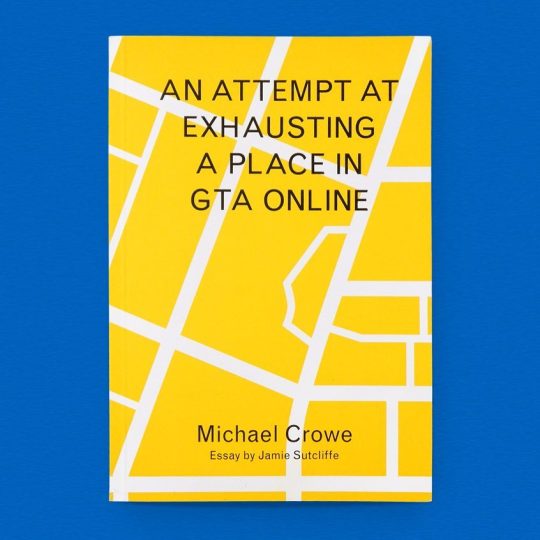
Text by Denise Bonetti
>Between the 18th and the 20th October 1974, Oulipo BAE Georges Perec - a Pisces - sits in a Parisian cafe on Place Saint-Sulpice, meticulously recording in his notebook every detail of the busy life of the square. His eyes are alert to 'what happens when nothing happens'. The more inconsequential the particulars he manages to pick up on, examine, or classify, the more excited he seems to become:
'Means of locomotion: walking, two-wheeled vehicles (with and without motor), automobiles (private cars, company cars, rented cars, driving school cars), commercial vehicles, public services, public transport, tourist buses.'
>The conceptual/obsessive experiment in cataloguing is a response to a writing prompt of his own devising, published about a month before in a collection of essays on public and private spaces (the adorably-named Species of Spaces and Other Pieces). Perec's practical exercise calls for the reader/writer to carefully observe the street around them and note *everything* down: one must set about it slowly, 'almost stupidly'; forcing oneself to see the space 'more flatly'. 'If nothing strikes you', says Perec, then 'you don't know how to see'. As it turns out, Perec himself is really good at seeing: after 3 days on Place Saint-Sulpice, his notes are over 50 pages long - mainly one-line annotations about buses, passersby, pigeons, gestures, more buses. He calls it An Attempt at Exhausting a Place in Paris.
>Perec made of this modality (a dry and neutral encyclopedic gaze at the unnoticed) a manifesto. In both writing and living, he called for a shift of attention from the exceptional to the ordinary, for an abandonment of the charmingly exotic in favour of the invisibly unexceptional - according to a philosophy he labels 'anthropology of the endotic'. In the essay 'Approaches to What?', in a somewhat self-referential aphorism, he remarks that 'railway trains only begin to exist when they are derailed, and the more passengers are killed, the more the trains exist.' That the ordinary, in other words, only lives in our attention as soon as it stops being ordinary.
>If this statement is true as it sounds, then, the virtual world of Grand Theft Auto Online must without a doubt be more real than the one we live in. The game's universe is expansive and hyperrealistic to the extent that navigating its space is an experience of an undecidable quality; the abundance of detail is so accurately mimetic and uncannily convincing it that the digital artifice both disappears into an ambient background, and never leaves the centre of the stage. The minutia of IRL city-walking, and of existing in a world that follows its own will (flecks of dust dancing in the wind, catching the sun; overheard fragments of strangers' phone conversations; the gas station attendant's body language in between serving customers), are alienated from us, digitally re-engineered, and presented back to us in the guise of a crime-ridden fictional world. In this sense, the GTA series is one of the most Perecquian exercises to ever exist. (Of course, amusingly enough, Perec's aphorism is also appropriate here on a more literal level: the game franchise is entirely built upon the premise that derailing trains - but also provoking car accidents, and especially murdering innocent pedestrians - is recommended if not required).
>Because of these underlying continuities between Perec's 'infraordinary' and the process of hyperrealistic world-making in sandbox video games, when I first read about Michael Crowe's re-enactment of Perec's experiment in GTA online (in a cafe, open-mouthed, holding a scone mid-air), I just blurted out 'Of course!' to the stranger sitting across from me. It made complete sense; the connection was there all along, only no one had ever written about it. In his wonderful introduction to the small volume, Jamie Sutcliffe confesses that he is 'jealous and frustrated [Crowe] got there first'. Although he follows this with praise for the book's undeniable 'inventiveness, inquisitiveness and relentless mirth,' I think the underlying reason for the (admittedly shared) envy is not only that Crowe exhausted a conceptual exercise skilfully, and in beautiful prose. He also hit a nerve, exposed a crucial side of the relationship between video games, literature, realism and simulation - and he did it playfully.
>At times, An Attempt at Exhausting a Place in GTA Online time follows closely Perec's model: it obsesses over weather, numbers and registration plates, the colour of people's clothes, passersby (especially women) eating things, commercial slogans, etc. Of course, these strong echoes can only highlight the essential polarities between the two universes: what in Perec's Paris is nature or chance (clouds, the pedestrians' trajectories, their conversations), is always artifice and intentionality in GTA. Even if the the game's phenomenology might be randomised, it is always layers of carefully contrived code that engender it: the player can never forgets this.
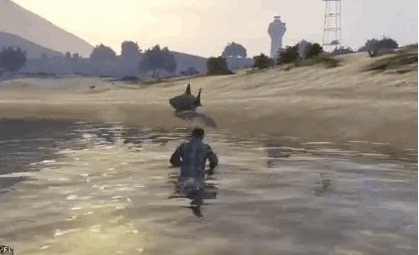
>One other definition that Perec devised for the kind of everydayness that escapes our perception is 'the infra-ordinary' - the swarm of details that hover just below the threshold of attention. If Perec's term is certainly appropriate for his preferred subject of writing, the choice of word seems even more significant in the context Crowe's Attempt because its meaning necessarily expands to the digital nature of the space explored. In the city-space of GTA, the 'endotic' and the 'infra' quite literally consist of the hidden workings below (or behind) the surface of game: the structure of its programming, the software's rationale - mechanisms that Crowe often lingers on, his phenomenological descriptions often slipping into conjectures about the game's logical engines:
'That woman is still parked at a green light. Melt down. As other cars approach they brake differently, some jerkily in stages, others in a smoother manner. The computer players seem to have different levels of driving proficiency.'
'There's a pristine jewellery exchange store opposite. Dilapidated buildings probably cost more to design and create in this game, as they would generally have far more detail. ... Directly opposite is the Elkridge Hotel. It can't be entered. I wonder what's inside. Is the book/cube poured full of colour, or transparency, with the road/pavement continuing on the floor? If hollow, how thin are the impenetrable walls?'
Crowe's asides often touch - more or less directly - upon questions of realism and effective simulation:
'The palm trees in front of me are slightly different heights. None look copied and pasted'
'It would be great if learner driver were going around, veering off cliffs, etc.'
'It's a shame there are no birds, it would add greatly to a sense of realism ... Perec had all kinds of pigeon action in his book'
>Even more interestingly, at times his observations go as far as hinting at the inherent opacity of the concept of mimetic representation itself: what is realism, when truly accurate depictions often seem even more surreal in their uncanny effect? Doesn't GTA's lifelike graphic rendering - like meticulously inventorial writing - draw attention to the very artifice of artistic creation?
'Very light rain. This slight rain seems realistic, but in Perec's reality the rain stops "very suddenly". If that happened in GTA it would seem like poor attention to detail'.
>In a review of Auerbach's Mimesis, Terry Eagleton elaborates on Brecht's idea that realism really is a matter of effect, not a matter of technique. The definition cannot be applied at the level of production or its methods, it has to depend on reception - at the level of reading, or, in this case - playing. Realism happens between the artwork and the audience's expectations; it's not about verisimilitude, or about whether a text (or video game) recalls something familiar; it's about whether or not the experience of the work matches an unmediated experience of reality: 'Realism is as realism does'.
>Eagleton concludes that 'artistic realism, then, cannot mean "represents the world as it is", but rather "represents it in accordance with conventional real-life modes of representing it". Realism as we normally understand it, then, has more to do with convention; it is more like an autonomous process of creation than a neutral mode of reporting. At one point, Crowe wonders 'what poets like T.S. Eliot would've added [to the game] by way of details within details'; the underlying idea here is that a deeper and deeper level of realism can only come from fabrication and designed artifice. A truly realistic world doesn't exist, it has to be manufactured and carefully weaved together. Perec, Eliot, the nerds at Rockstar Games: all mods, tinkering with code to fashion a world that feels more real than the invisible one we live in.
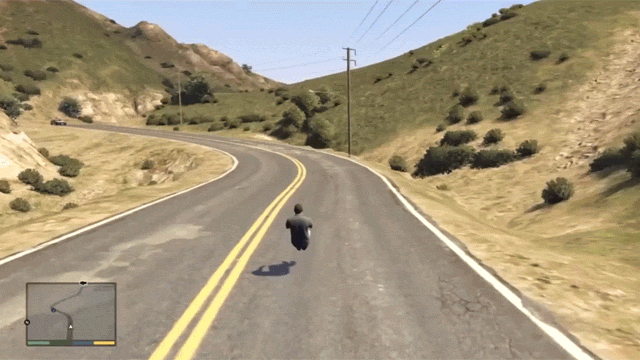
>The most prominent strand of reflections in Crowe's Attempt, however, is dedicated to imagining a future in which GTA is so utterly realistic that it surpasses reality itself. Crowe pictures the horizon towards which the GTA series is moving not only as a simulation indistinguishable from its original, but as a utopian uber-world populated by perfect AI characters:
'In future games, players will be able to chat with all computer characters about any topic, for any length of time. The only problem would be that the computer characters would likely find us too boring and go off to chat with another computer character that has also read every line of text and seen every film/artwork.'
'I wonder how detailed these games will become. Could growing a zit in the game affect your character's day? ... Could millions of players all live as microorganisms on the face of a GTA character?'
>The beautifully apocalyptic scale of Crowe's prophecy is made somewhat more ominous by the hazy, yet closed, temporal arc that his little book follows. Whereas Perec opens and concludes every section of his Attempt declaring the time window of his observations, Crowe rarely if never talks about the passage of time in the game ('I dont keep track of time as i should, here or irl'). The only real time marks - vague, atmospheric, possibly just conceptual - are in the names of the 5 sections the book is divided into: '(Daybreak)', '(Morning)', '(Break)', '(Nightfall)', '(Night)'. Crowe's 24-hour cycle - whether referring to IRL or GTA temporality - is possibly more compellingly symbolic than Perec's 3 days. The self-contained movement from dawn, to sunset, and then darkness, lends the volume a sense of closure that it would otherwise lack - given its status as a semi-conceptual exercise aimed at an inherently unattainable objective ('exhausting' a place).
>This explicitly closed timeline also means that Crowe's subject, and thus his literary project, assume more gravitas than one might expect. What could begin in the reader's mind as a playful pastiche actually becomes more like a tragedy, with Crowe's avatar helplessly standing and witnessing unstoppably violent events, most of which utterly gratuitous. The text is so ridiculously faithful to the Aristotelian unities of time and place (one day, one place), that one might turn a blind eye on its complete lack of any unity of action ('events strictly tied together as cause and effect, adding up to one single story' sounds pretty much like everything this book is not). The book does funny, but it also does serious, poetic - although possibly not cathartic. In a sense, Crowe's avatar is a bit like a postmodern Hamlet: a passive and melancholic intellectual antihero, surrounded by farcical death in a corrupted society.
>In the last section of Crowe's Attempt, '(Night)', the more beautifully poetic descriptive fragments that populate the book gradually increase in number as if to signal the nearing calmness of closure. These are nominal phrases that choose to go nowhere; many are about things that are far away, abandoned, or circular:
'A very high crane in the distance.' '1000s of lights visible from my spot.' 'The window lights have different hues, every light isn't just white. Slight yellow, greens.' 'One side of the sky is pink, the other blue, held apart by purple.' 'A plane flying by way off in the distance.' 'An ambulance is burnt out, two people inside burnt entirely black.' 'A human is spinning around in circles in their car (...).' 'Dropped cigarette on the floor.'
>Before you know it - much, much before the last section - you'll feel stupid for ever thinking this book would be just a parody to lol at, or a kool koncept show your other Highbrow x Lowbrow friends and pat each other on the back for knowing the experimental French literature reference. You'll be moved by how beautiful Los Santos can be - the geometry of its facade architecture; its computer-generated clouds drifting above sports cars, reflecting the light in coupé red or neon purple; private (NPC) citizens relaxing on benches or outside cafes, smoking, eating donuts, eating bagels, talking into their phones to their private (NPC) citizen friends about their job, their boyfriends, their drug problem. I won't say you'll forget the world you're in is a video game you're in - because Crowe won't let you - but I think you will stop caring.
>An Attempt at Exhausting a Pace in GTA Online is published by Studio Operative, and can be bought at Glasgow's Good Press, or here.
1 note
·
View note
Photo
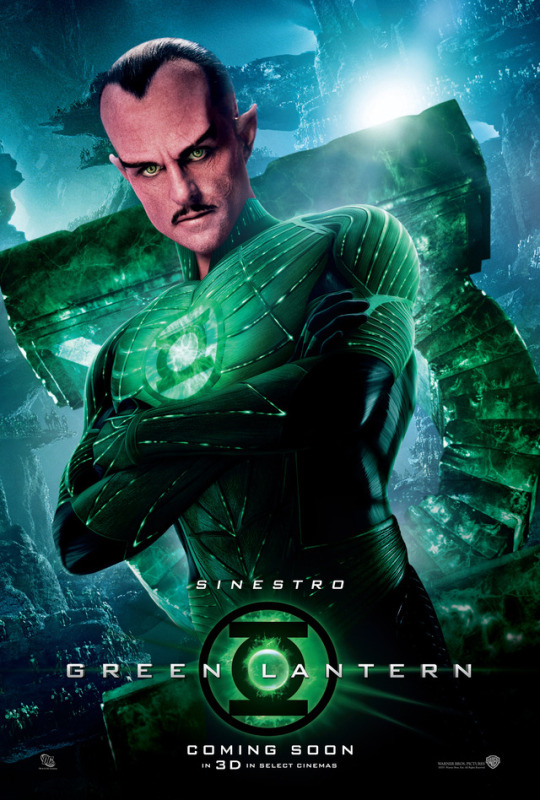

Interview: Actor Mark Strong on Playing Sinestro in 'Green Lantern' Source: X

I've had the honor of interviewing actor Mark Strong a few times over the last few years, while following his career explode with riveting roles as villains in numerous big movies like RocknRolla, Sherlock Holmes, Kick-Ass and Robin Hood. While some comic book fans may say Sinestro is also a villain, in Warner Bros' Green Lantern movie hitting theaters this week, Strong plays a good Sinestro, before his yellow destiny. I met up with Mark at Comic-Con last year for an interview on this very topic, and followed up with him again a few weeks ago after finally seeing Green Lantern to talk about the challenges of playing the alien Sinestro.
Thaal Sinestro was born on the planet Korugar in space sector 1417 and is dedicated to preserving order, making him one of the greatest Green Lanterns in their history. As always, Mark does a fantastic job in the role, bringing some gravitas to the character. I can't wait to see where Sinestro will go beyond this, as fans definitely know that he has an interesting future ahead of him and hopefully we'll get to see Mark bringing that future to life down the road. For now though, here's my latest interview with Mark on Green Lantern.

You've mentioned how important technology was to making Green Lantern, can you expand upon that and how technology was so important for your character and creating this movie?
Mark Strong: Well, the technology has definitely caught up with the vision, so you can make a film like Green Lantern. But what's been fascinating me over the last few days of talking about it is what I've realized is that Superman and Batman are the well-known DC Superheroes. Green Lantern was always considered a second tier one or "the other one". And I realized the reason for that is because you haven't been able to film Green Lantern before now. Superman's problems - apart from the fact he goes to Krypton and back, and Batman's problems are essentially earthboun-- it all takes place on Earth. So once you've got them in the costume, in the cape and the tights, everything happens on Earth. But Green Lantern, you can't tell that story without going to Oa. So it's not that he's a lesser one, it's just that the technology hasn't been able to kind of deliver him until now. I'm sure that's the reason.
But actually, when you think about it the whole, guy finds an alien, inherits a ring, realizes there are other people within the universe, then goes to Oa, then realizes there's a cosmic police force, it's mind blowing. It's way more interesting and cool than Batman or Superman's problem, which are essentially fairly simple.
Speaking of technology, it seemed like you didn't have much control in this role. As an actor, it's important that to fully embody a character, but in this you are wearing grey spandex, heavy make-up, prosthetics, and all you really have control over is your face and head. Is that restricting for you as an actor? And how do you approach that in terms of still giving the performance you want to give?
Mark: It's something you have to get used to. I mean the prosthetic… Funny enough, even though, as you say, the body is CGI, but they are my movements. So I wear a suit that tracks my movements. My movements have been copied, so it is my body. My head, bizarrely, I'm under a prosthetic with contact lenses, so I feel it's very hard to make the usual facial expressions that you would in order to communicate. I had to learn a slightly different way of allowing Sinestro to communicate, by tilting the head, catching the light in a particular way, turning in a particular way to tell the story, because I couldn't rely on furrowing my brow, for example.
But I quite enjoyed the challenge, once I got used to the idea that none of it was there. Essentially, it's not dissimilar from theater because you have to use your imagination. You have to fill in the blanks. And the same is true of theater. You walk out on stage, you know it's not real. You can see the audience. You can see the lights. And you walk off stage and the stage management person is standing there with headphones and a clipboard, even though you're pretending you're in Chekhov's Russia or something.
So you know it's not real, but that's not the point. The point is how you help the audience suspend their disbelief and transport them somewhere else. So I don't have a problem with the fact that I wasn't in complete control like you are in a normal film.
Did you feel that using so much technology to build this world would help in telling the bigger story, specifically with your character and his progression?
Mark: Yeah, because I don't know how you would shoot it convincingly to allow people to believe that there was this place and that these people existed within this place. So I have no problem with… The truth is, it's born out of a truth. The costumes, and they haven't just made them CGI because of a gimmick. The costume designer wanted to suggest that each of these different Lantern's uniforms was their skin, and that the ring created their uniform on their skin.
So if you look closely, Tomar-Re is a slightly scaly version. And if you look at Kilowog's, it's slightly different from Sinestro's, from the humanoid ones. So you need CGI in order to tell that story. I mean one character, one Green Lantern, is Bzzt, he's a fly. How's he going to get spandex on? He couldn't put on a spandex suit! There's one Green Lantern that's just an eyeball. So I love the idea that it's born of a truth, which is that you could believe that the suit is organic. It comes from the ring and from within them. And you can only tell that, I think, with CGI.
While on set, did they ever show you what the world you were in would look like? And second part of this, did you have the chance to look at your performance in relation to the world, with other elements rendered, almost with some pre-vis?
Mark: To answer the second bit first, no, there was no technique to show you, not even on the monitor. Even if you went to the monitor you were still looking at yourself in the funny gray suit with dots against the blue wall. They couldn't phase in, or never did phase in the background.
But what we did have on set was the artwork so you could go and remind yourself where you were. For example, when Sinestro speaks to all the lanterns, I would go and look at where I was and where they were. And, in fact, that had a 3D model on the side of the set, so I could go and see exactly where I was. But in the end I'm still standing on a green box looking at nobody. And part of the challenge of that is what makes it fun.
How much interaction did DC Comics have, specifically Geoff Johns. Did you know him and work with him on set? How much did DC come in to shape the characters, especially with Sinestro because of his mythology and where he goes?
Mark: Geoff's input, and I got to know him really well over the course of making this, his input all happened before I arrived. I think his input was with the writers, with the producers, and with kind of guiding them in the right direction with the mythology. Once we got on set it was Martin's world. Martin was in charge.
My favorite moment was when I came for a test, because we also had to work out… Once Sinestro had the prosthetic, had the color, we had to work out how to light it, because different kinds of light would make the color fade or would make it look too purple. So we had to do screen tests where the light would be changing and we had to see what would be the the best way. And Geoff was at one of those. And I loved the moment when I was able to just go up to him and go, "What do you think?" and see him go, "Oh my God! That is exactly how I imagined him."
And then Geoff, I would ask him about the history and who Sinestro was, why he was the way he was, all of that. He was always around to talk to. But his input was probably more when the thing was being put together in pre-production.
Finally, I want to ask again about how you play so many different, unique characters, as that's what I really love about you as an actor. How do you choose your projects and differentiate your roles, and how do your career choices work in relation to your family?
Mark: Well, I love the idea of transformation. I come from the theater where you are allowed to experiment way more than you are on film. You can play old guys, young guys, you can play people from all over the world in theater, and you have weeks and weeks and weeks to rehearse that and get it right. So I've always been fascinated by playing something that's other than me. I wouldn't really know how to play myself, I don't think. I wouldn't trust that that was the right way to play it.
And that's why… the head of the Jordanian Secret Service [from Body of Lies], great. That's removed from me. Archy [from RocknRolla], a gangster, it's removed from me. I get to wear a wig. It transports with me to somewhere else. And the same is true with Sinestro. What I loved about him was the potential for transformation. And as an actor, that is the thing that I love most of all. Probably why I'm a character actor. As far as my family is concerned, they love everything I do. My boys are absolutely wild about Sinestro. And, of course, the irony is in my house the bad guy is the good guy.
A big thank you to Mark Strong and Warner Bros. It's an honor to speak with Mark every time and I'm always excited to see what he will do next. Green Lantern is playing in theaters now!
1 note
·
View note
Text
What No Man Has Seen Before: Remastering Deep Space Nine to Maximum Quality
I’m done.
Most stories don’t begin at the ending, but that’s the only place to start this one. I’ve been working to remaster Deep Space Nine for the past nine months, ever since AI-based video upscaling software began to hit the market. After I saw how much improvement could be wrung out of some old MKVs, I decided I’d start over, using the original, superior, Deep Space Nine DVD source. Nine months later, I’ve accomplished what I set out to do: Create a method of remastering and upscaling Deep Space Nine that didn’t rely on hand-combing episodes to fine-tune deinterlacing algorithms while compromising on image quality to the smallest extent reasonably possible. I’ll be demonstrating the results all throughout this article.
I have created a 23.976 progressive version of Deep Space Nine, codenamed Rio Grande. While I have not yet checked the method against the entire show, it worked well on test episodes from S2, S4, S5, and S6. Special thanks to Cyril Niderprim, who found the hilariously simple solution below, and a pox on the small mountain of more complicated scripts I’d written. While Rio Grande is capable of throwing errors — I have included an example of such — there’s an alternative if it tangles up an episode in a way you don’t like.
I have also achieved an identical-quality 59.94 fps conversion, codenamed Orinoco. Orinoco preserves motion correctly in all scenes and is included here as an insurance policy. While it matches Rio Grande on quality, it packs 2.5x the frames and takes 2.5x as long to process and upscale. Rio Grande should work — but if it doesn’t, Orinoco will. If either of these methods proves insufficient to deal with an episode, we’ll come up with a custom way of handling it and I’ll wind up writing something about it and/or updating this article to keep track of special cases.
I’ve done a couple renders of the credits to showcase two different AI upscaling models Topaz offers: Theia Detail (at default settings) and Gaia-CG. Gaia-CG is below:
youtube
This article is not a step-by-step tutorial on how to perform this process suitable for literally anyone to follow. That will be its own project. I will, however, provide enough information that anyone with a passing knowledge of AviSynth should be able to recreate both approaches.
Theia-Detail credits below:
youtube
There’s a missing bit of frame for several seconds when the Bajoran freighter is panning around the station. This is a unique error — I’ve never seen it anywhere else on the show — and it pops up a lot, nearly regardless of what filters you use to adjust an episode. It’s always unique to the credits; you don’t need to worry about random blocks of content missing from the sides of your video.
Maximum Warp
Rio Grande and Orinoco make as few compromises on image quality as is reasonably possible. Every aspect of this process is designed to preserve detail at the deliberate cost of hard drive space until the final encode, at which point you can be as lossy as you like.
All of the clips you’ll see below were encoded in 0.0 H.264 until losslessly upscaled frame-by-frame. I encoded these clips in H.265 at a CRF of 6, which turned out to be ludicrous overkill. Live and learn. There’s a freeze-frame, just-noticeable quality difference between CRF 14 and CRF 20, while 25 is pretty ugly.
Upscaler Models: Avoid Artemis, 200 Percent Upscales
I’ve encoded at least one example of every upscaler mode Topaz offers except for Artemis-LQ and Artemis-HQ. These algorithms are completely unsuited to Deep Space Nine, and while they no longer produce literal garbage output when run against the show, they do not react well to its content. Consider them fundamentally unsuited to the task. I don’t care for Gaia-HQ’s output against DS9 very much, though I included one example below. That leaves the two Theia models and Gaia-CG.
I’ve always preferred Gaia-CG, so that’s what the majority of the encodes are in, though I’ve also showcased the Theia algorithm family. The Theia models offer tunable parameters for noise, sharpness, and detail recovery, and these can be very useful if you’re attempting to denoise an ugly patch of wall or carpet.
The 200 percent upscale option should be avoided. It creates errors that were not originally present in the source in some cases and it offers meaningfully reduced image quality compared to the 400 percent version. Be advised that the repair process has a habit of creating a seam down the left or right side of the image frame — you can crop it out with no trouble, but it’s something to be considered.
Topaz offers the option to upscale losslessly by image or via lossy MP4. All of the upscale videos you’ll see here are lossless PNG conversions.
How Much Additional Detail Did I Recover?
The idea that sent me haring off on this mad quest was that I could extract additional visual data if I returned to the source DVD rather than relying on old backup files. Here’s an example of my best upscale in January:
That was then.
While some of these improvements come from low-level improvements to the AI upscalers themselves, the upscaler has to be able to lock on to enough information to upscale an image without making hash of it. Imagine a screenshot where everything was rendered at DVD resolution except for Odo’s hair, which was done in 4K. It would look odd, to say the least. The more detailer the upscaler can get its hands on, the better the chance it creates something gorgeous on the back end. Going back to the DVDs gave the upscaler more to work with in the final process.
This is now.
As a reminder of how far we’ve come: The following three screenshots are the Defiant as it appears on the native DVD, the best upscale result I could achieve in early February, and my current best result today:
The Defiant in all her DVD glory. At least it beats Netflix. Let’s see what we can do.
February, 2020: It’s a big improvement, but I believed better was possible.
That’s more like it. Image from Orinoco encode.
Here’s my favorite Defiant shot from the entire show. I was really proud of how this turned out in April. It’s still quite nice.
I still like the way this came out, but it’s not the best we can do.
This is one place where I’m obviously getting help from a tweaked AI upscaler model. Better processing might clean up the model a bit differently, but some of the features on the hull are slightly different shapes. This image benefits from a side-by-side comparison to the other at maximum resolution.
The gains are real. Every time I compare an upscale based on the old MKV files I’d created years ago against the benefit of going back to the DVD, the DVD wins. If you want the best version of Deep Space Nine, invest in the DVD set.
So How Good is It?
With careful processing and good upscaling, it’s possible to give Deep Space Nine a clarity that I think approaches that of what’s typically referred to as “HD” content, though it’s still limited to the NTSC color gamut as opposed to later standards like Rec. 709. At its worst — allowing for some deviations from perfection — it’ll still look like the best damn DVD you’ve ever seen. At its best — and I consider the shot of Sisko up there to be one of the best — I’d argue that he, at least, comes across in HD levels of detail.
The processing steps I’ve used repair some baked-in damage to the source, but not all of it. There’s a frame sequence in “The Way of the Warrior” that literally looks as though something was spilled on the film, and that’s not something I know how to fix. All of the encodes below are from Rio Grande.
Way of the Warrior: It’s No Illusion
“The Way of the Warrior” contains two of the best battle scenes of Season 4. In the first, Sisko takes the Defiant to rescue a Cardassian ship under heavy fire from the Klingons. You can see the VFX team experimenting with what amounts to an over-shoulder kill cam — not exactly the kind of thing Next Generation was known for. It’s obvious the VFX teams had a lot of fun with the Defiant.
youtube
The second major battle scene of the episode is below. There’s an excellent callback to an event from the show’s pilot, when Kira attempts to bluff a squadron of Cardassian warships into believing the station is far better armed than it actually is.
This time around, things go differently. Upscaled in Theia Fidelity first, at default settings, followed by Gaia-CG. Gaia-CG is what I’ve used for screenshots in the past:
youtube
I’ve included clips of normal human interaction in this article specifically to illustrate that these processing techniques don’t just work on starships and battle scenes. Deep Space Nine is about far more than just CGI combat — it just happens to have some really great examples of the latter, particularly by late-90s standards. Gaia-CG below:
youtube
Paradise Lost
The Defiant takes on the Lakota in this battle scene. Elements of Starfleet were in the process of slow-walking a coup attempt. This clip deliberately shows what happens when Rio Grande doesn’t get a scene entirely right. While this shot mostly works, it’s noticeably jerky at the end. I’ve confirmed that this only affects Rio Grande — Orinoco plays back perfectly smoothly in this situation. If the small amount of jerk doesn’t bother you, Rio Grande is your oyster. If it does, try Orinoco.
youtube
Far Beyond the Stars
One of the benefits of science fiction is that it allows creators to play fast and loose with the question of time travel. Here, Benjamin Sisko is flung back into the 1950s — at least, in his own mind — and finds himself face to face with the ugly racial politics of the era. Upscaled in Gaia-CG:
youtube
In the Pale Moonlight
The greatest episode of Deep Space Nine concludes with a chilling soliloquy. Upscaled in Gaia-CG:
youtube
The same scene, rendered in Theia Detail at 10 percent sharpening, 20 percent noise reduction, and 20 percent detail recovery.
youtube
Sacrifice of Angels
Y’all knew we’d be back to this episode, right? In First Fleet (below, rendered in Gaia-CG), the Federation closes to battle with the advance forces of the Cardassian / Dominion military. I quite like the Galaxy-class maneuvers that bookend the clip. The Galaxy-class often looked fat and ungainly from certain angles, while others showed it to great effect. It gets more of the latter and less of the former on DS9 than it did on TNG.
youtube
This initial engagement doesn’t provide the opening the Defiant needs in and of itself. Starfleet decides to try and force a breach through enemy lines, even though they’re outnumbered, 2:1. This is the scene I chose to render in a number of different ways. First, Gaia-CG:
youtube
Next, here’s Gaia-CG at CRF=20. The quality loss is modest here, but I don’t recommend going much higher. The problem with starting from DVD source is that there’s not a lot of detail to lose before quality starts suffering, and the interpolated/upscaled information is only just so good to start with. When you start pushing the quality downwards past a certain point, it drops like a rock. CRF=25 is way too high. I wouldn’t go lower than 20.
youtube
Gaia-HQ:
youtube
Theia Detail, default settings:
youtube
And finally, Theia Fidelity, at 20 percent sharpness, 30 percent detail recovery, and 20 percent noise reduction settings:
youtube
Although I’ve chosen to focus on the later seasons of the show, this encoding and upscaling method works on the early seasons, too. Just keep in mind that the actual source material for the early seasons isn’t as good as what we got in later years.
That concludes the demonstration portion of today’s program. Now, let’s talk about implementation.
How to Encode Rio Grande
To encode using Rio Grande, rip the DVD using DVD Decrypter and generate a D2V index file using DGIndex or an equivalent tool of your choice. Next, fire up whatever AviSynth front-end you use, if you use one at all. I use StaxRip, personally.
The AviSynth script is as follows:
TFM() TDecimate() QTGMC2 = QTGMC(Preset=”Very Slow”, SourceMatch=3, InputType=2, Lossless=2, MatchEnhance=0.75, Sharpness=0.5, MatchPreset=”Very Slow”, MatchPreset2=”Very Slow”) QTGMC3 = QTGMC(preset=”Very Slow”, inputType=3, prevGlobals=”Reuse”) Repair(QTGMC2, QTGMC3, 9)
That’s it. You also have the option to inject some noise back into the video in the process of running these scripts — season to taste, basically. Noise added to one of the QTGMC runs will still come through after repair. While Rio Grande isn’t 100 percent frame-perfect, it works perfectly on all but one of the 29.97 fps scenes I’ve tested against. If it proves to have more issues than anticipated, we’ll modify it — and that’s where Orinoco comes in. Technically, it’s possible to render this specific scene at 59.94 fps and then include it in the 23.976 fps version by assembling a VFR file when you compile your image sequence back into video. I might explore this in a future update.
The QTGMC runs above are required to achieve the improved visuals, and while I’m completely open to alternatives, nothing I’ve ever tried comes anywhere close to what this script can do. You can tune the above script for strength and processing time, but you’ll notice the quality hit from stepping down to “Slow” from “Very Slow” and “Medium” is unsuited to the task. If you like your content noisy and you don’t mind more combing artifacts (or have a different solution for dealing with them), “Slow” may be a better option.
The one downside to running QTGMC this way is that it can occasionally produce a small ripple in one part of a scene. I find it trivial to ignore and the only solutions I’ve found for it so far cause far more damage than the ripple itself. While I’d like to get rid of it, it’s currently a tolerated “feature.”
Defiant, rounding the station.
The “InputType=2” and “InputType=3” sequences are essential. Running a single QTGMC instance will not produce the same effect. Running two instances of “InputType=2” will not achieve the same effect. There are nine potential ways to combine input types in a repair run like this and I’ve tested every single one of them. The “2,3” combination is what works the best, from “Emissary” to “What You Leave Behind.”
Similarly, I’ve tested all 25 functional “Repair” modes AviSynth supports. You want ,9. If you don’t like that output for whatever reason, try ,1. Most of the others didn’t have much of an impact one way or the other, though a few of them broke content in interesting ways. I’ve revisited them more than once when testing new filters, just to see how final output varied by mode.
If you have suggestions on how to improve output quality further, by all means, drop me a line.
How to Encode Orinoco
Orinoco is not simple, but it works far better than I feel like I had any right to expect.
For starters, we’re creating two files, not just one. Encode your first version of your target episode using the following script:
TDeint(mode=1, type=2, tryweave=true, mtnmode=3, full=false, ap=10, aptype=2, slow=2)
This script orders TDeint to produce doubled frame output, to perform kernel interpolation, to attempt to repair a frame by weaving if the result is fewer combing artifacts than deinterlacing would create, and to only deinterlace interlaced frames. This preserves the progressive frames baked into the NTSC source. Type=5 was the only option that came close to Type=2 in overall image quality, and the bi-directional blending Type=5 introduces causes more frame blending issues at scene boundaries. Type 5 occasionally fixes a problem in Type 2, but it causes them far more often than it repairs them.
Now we set this clip aside and turn our attention to the other. Run the following script against your second clip:
QTGMC2 = QTGMC(Preset=”Very Slow”, SourceMatch=3, Lossless=2, MatchEnhance=0.75, Sharpness=0.5, MatchPreset=”Very Slow”, MatchPreset2=”Very Slow”) QTGMC3 = QTGMC(preset=”Very Slow”, prevGlobals=”Reuse”) Repair(QTGMC2, QTGMC3, 9)
While similar, this script is not identical to the script we used for Rio Grande. Rio Grande’s QTGMC implementation is run in progressive mode. For Orinoco, we want to double the frame rate, bringing our base 29.97fps up to 59.94fps. Now that QTGMC and TDeint are at the same frame rate, we run a repair against them, too. If you run two clips in “Repair” mode at two different frame rates, it’ll work… ish. You’ll know if you’ve done this if you’ve got a weird seam migrating across your video.
This is a bass-ackwards approach to video editing, at least as far as I’m aware, but there’s a method to my madness. The reason people don’t typically just inject a bunch of frames to bring VFR 23.976 / 29.97 content up to 59.94fps is that the process the interpolated and blended frames that boost the frame rate can also create visual errors and other problems. This creates a catch-22: Leave those frames out, and the single-rate output is choppy. Keep them in, and some of your scene boundary changes are going to look decidedly odd as a fireball mushrooms from someone’s head, or two completely different locations are blended together. It’s not a great situation.
But there’s a way to fix the problem.
clip1=FFVideoSource(“C:\DS9S6D2\Sacrifice-TDeint.mkv”) clip2=FFVideoSource(“C:\DS9S6D2\Sacrifice-QTGMC-ToPairWithTDeint.mkv”) Repair(clip1, clip2, 9)
The reason we create the interpolated QTGMC file is to serve as a sharp, clean source against the Sacrifice-TDeint file. The reason I used QTGMC for this is that — as I’ve said before — I’ve never found an equivalent method for creating clean footage. If you want less noise in your video, use “Very Slow” or “Slow” as an alternative. I do not recommend “Medium” for this purpose.
You can run QTGMC against this output again if you want, but the footage will start to look a bit overprocessed. The Theia models can compensate for this to some extent, thanks to a fairly effective (and tuneable) denoise algorithm. There are multiple examples of Theia models in the videos below.
Quality-wise, Orinoco and Rio Grande get you to the same place and I often cannot tell the difference between them when I compare them frame-by-frame (not counting interpolated frames, obviously). Rio Grande is to be preferred — it’s faster and simpler — but I cannot guarantee that it’ll work on all 176 episodes of the show. If you run into an episode with erratic or stuttering motion when its created via Rio Grande, try Orinoco as an alternative and let me know you’ve hit a snag.
Flaws and Shortcomings
Orinoco and Rio Grande are not perfect. I’m still hunting for a method of eliminating the ripple. Small as it is, it’s basically the one problem left (so far!) that I haven’t solved. The best method I’ve come up with so far involves using MCTemporalDenoise, and MCTD appears to be both entirely single-threaded and causes me other headaches in terms of source quality.
If you want to experiment with MCTemporalDenoise, I’d recommend using up to seven pixels but applying a relatively weak effect (strength 2-3). This will not completely eliminate it, but it helps in certain places. If you don’t like the impact this has on your visual quality, investigate the Theia upscaling models and try applying 10-20 percent noise reduction. While you don’t want to go nuts, you can lightly smooth away some defects. I don’t like using one filter just to squash problems another creates, and with any luck Orinoco won’t be needed in the first place.
While my goal has always been to create a one-size-fits-all template for this project, I’ll record any adjustments or changes that need to be made to Rio Grande or Orinoco to deal with problematic episodes, unless that episode is Move Along Home.
Next Time on… the Deep Space Nine Upscale Project
Now that I’ve finished this project, I get to actually start ripping episodes and encoding them. I’m going to write a set of tutorials that give an actual guide to how this works, build a benchmark for workstations, and solve any per-episode problems that need fixing. I’ve come up with a completely free method of upscaling that, while not as good as Topaz, presents a genuine improvement. I also want to look into PAL.
ViacomCBS doesn’t think Deep Space Nine is worth remastering. I say it’s wrong. There’s a limited amount of improvement we can squeeze from a DVD, which is why you don’t see me referring to the show as “4K” or “UHD”, even though it’s common to see those terms tossed around in projects like this. You can upscale Deep Space Nine to 4K resolution, but there’s no way (yet) to squeeze 4K quality out of a DVD source file. This is an imperfect solutions — but it’s light-years beyond any previous version of the show that’s ever existed. If it turns out that Rio Grande does throw more than very occasional 23.976 fps errors, we’ll find a solution for those episodes. There’s every indication that Nvidia’s upcoming GeForce RTX 3080 is going to make this kind of upscaling much faster, which will reduce the pain of a 59.94 conversion.
After today, no Star Trek fan has to wait for ViacomCBS to decide it makes financial sense to invest in its own back catalog. It’ll cost some money for the DVDs and the software, and a lot of compute time to get the work done (8-10 hours per episode on an RTX 2080 at 23.976, 2.5x longer at 59.94fps). Will most people do this? No. Most people will watch the show on Netflix, where the quality is much lower than what they’d get on DVD.
But as of today, nobody has to do that again. As of today, you can see the work of the VFX artists and actors who created in this show the way it was meant to be seen. Orinoco and Rio Grande aren’t perfect, but they illustrate just how much additional quality can be wrung from late-90s DVD source. GPUs are getting faster. AI upscalers are getting smarter. Even if the computer or GPU you own today isn’t capable of tackling a project like this, your next one very well might be.
May the Prophets guide you,
Hruska out.
I owe thank-yous to Stan Pennington, Gary Huff — man, Gary, I probably owe you a hearing aid — Cyril Niderprim, Robert Hallock, Andrew Swan, David Berry, Dan Greeney, Mark Renoden, the folks at Black Magic, my long-suffering fiancée who has listened to me talk about this topic for most of a year and contributed insights at numerous points, Ben Carter, Joe Robinson, multiple helpful individuals at Doom9, and a lot of other people. If I forgot names, I’m sorry. If you helped me, thank you. Most of all, thank you to the talented actors and artists who created Deep Space Nine in the first place.
Now Read:
DS9 Upscale Project Update: What I’ve Been Working On
Deep Space Nine Upscale Project Season Finale: What We’ve Brought Ahead
Deep Space Nine Upscale Project (DS9UP): Technical Goals and FAQ
from ExtremeTechExtremeTech https://www.extremetech.com/extreme/314653-remastering-deep-space-nine from Blogger http://componentplanet.blogspot.com/2020/09/what-no-man-has-seen-before-remastering.html
0 notes
Text
the making of an ‘impossible’ port • Eurogamer.net
It began with Doom 2016 – a Switch port so ambitious, it simply didn’t seem possible. However, since then, a procession of technologically ambitious current-gen console titles have migrated onto the Nintendo console hybrid, culminating in the arrival of the wonderful Metro Redux from 4A Games – highly impressive conversions and perhaps the closest, most authentic first-person shooter ports we’ve seen. So what’s the secret? How do developers manage to achieve such impressive results from five-year-old Nvidia mobile hardware?
“At first, I did have really big concerns performance-wise,” admits 4A’s chief technical officer, Oles Shishkovstov. “You know, going from base PS4/Xbox One with approximately six and a half or seven CPU cores running at 1.6 GHz to 1.75GHz down to only three cores at 1.0GHz sounds scary. The GPU was fine, as graphics can be scaled up and down much easier than, for example, game simulation code.”
The results of the conversion work are certainly impressive bearing in mind the yawning gap in CPU specs. 4A started out by translating over the existing Metro Redux games from PS4 and Xbox One (and to stress the point, Switch doesn’t get last-gen ports here), a process the 4A team carried out very quickly, but this early version of the game could only manage frame-rates of around seven to 15 frames per second. The games were entirely CPU-bound.
Halving the target frame-rate from the PS4 and Xbox One’s 60fps down to 30fps was required before the task of optimising systems began. “First, we backported some optimisations from Exodus to the Redux codebase,” Shishkovstov explains. “Then we focused on animation processing on the high level and on extracting ILP (instruction-level parallelism) out of the A57 on the low level – down to assembly. The low level optimizations alone got us to an unstable 30Hz when we were not GPU bound. Then the bone LODding arrived – the CPU [issue] was ‘solved’ even with some headroom necessary for stable framerate.”
youtube
Everything you need to know about the Switch versions of Metro 2033 and Metro Last Light. Impressive stuff!
Explained like that, 4A’s solution to the Switch’s CPU limitation seems fairly straightforward but the process of coding at the assembly level – literally the native language of the Switch ARM Cortex-A57 CPU cluster – can’t have been a walk in the park. Animation sucks up a lot of processor cycles, so the idea of adding level of detail (LOD) transitions to the system makes a lot of sense.
After this, 4A moved on to GPU optimisations, and it all began with the choice of graphics API. The firm has a long history of supporting the most performant, low-level APIs, with Metro Exodus running on DX11, DX12, Vulkan and GNM across its various multi-platform releases. Switch itself supports OpenGL and Vulkan, but for optimal performance, 4A chose the API developed by Nvidia itself for best performance on Switch.
“NVN is is lowest possible graphics API on NX,” explains Shishkovstov. “CPU overhead is negligible, in most cases that’s just a few DWORDs written to the GPU command buffer. It is well-designed, clean and exposes everything the hardware is capable of. Much better than Vulkan, for example.”
And it’s here where we’re especially interested in how Switch delivers so much from so little. When the Nintendo hardware was first announced, our only experience of the Tegra X1 processor came from the Shield Android TV, where last-gen console conversions typically under-performed. It seems that NVN really makes a key difference here, with 4A suggesting that it gives direct access to the Nvidia Maxwell architecture. So what Maxwell features are used in Metro Redux?
“I am not sure I can talk that about, but we use all of them it seems,” explains Shishkovstov. “Much of our GPU optimisations were focused on reducing memory bandwidth/off-chip traffic. For example, NVN exposes a lot of controls for memory compression, tile cache behavior and binning, memory layout and aliasing. For example, the straight immediate mode rendering is only used during g-buffer creation and shadow map rendering. Every other pass, including forward rendering and deferred lighting uses binning rasteriser with different settings for tile cache.”
In common with a lot of games of this generation, Metro Redux also sees the developer make the jump to using temporal super-sampling – or temporal super resolution, as 4A calls it. The idea is very straightforward. Traditional super-sampling is the process of rendering at a higher-than-native resolution, before downsampling to the developer’s chosen pixel-count. TSR is the same basic idea, except additional detail is gleaned from past frames instead. The technology is being used extensively in improving smartphone camera quality, but outside of games, there are other uses too.
“That’s a well-known FBI solution for reading car plate numbers from the space satellites,” says Oles Shishkovstov. “The problem is it is extremely texture sampling and math heavy for the Switch’s GPU. We have to derive something which is much cheaper and without major quality compromises. It wasn’t easy. I spent more than a month on that – it seems like Maxwell GPU ISA is my native language now.
“The end result takes approximately 2ms at 1080p with only nine texture samples and tricky math. It also does anti-aliasing as a byproduct. When pushed way to hard (it happens in 1080p) the algorithm still produces pixel perfect edges and sharp texture details and only AA quality somewhat degrades – but that is barely visible even for the trained eye.”
Using temporal super resolution, Shishkovstov reckons that the concept of native resolution rendering as we know it isn’t particularly relevant, which raises some interesting questions. Look back at our analysis and you’ll see that we were able to pull a few pixel counts from individual frames. However, it’s games like this, Modern Warfare 2019 and many others that are making us consider new techniques of getting some kind of measure on image quality. Redux on Switch doesn’t look as clean as the PS4 version, but if we pull a like-for-like image of Metro from the locked 720p of the last-gen versions, image quality is on another level.
Whether you’re docked or running in handheld mode, the accumulated output is 1080p or 720p respectively, but the clarity of the image does adjust, according to content. In terms of overall clarity, the technique chosen does look especially impressive when played portably, which raises the question of how 4A scaled the game across docked and handheld modes.
“Going docked you get 2x faster-clocked GPU but only moderately more bandwidth, so it is not magically 2x faster at all, but still considerably faster,” explains Shishkovstov. “That allowed us, for example, to render per-pixel velocities for more objects resulting in slightly more correct TSR and AA. In handheld mode we only draw velocity for HUD/weapon – that’s all we can afford.
youtube
4A Games’ Metro Exodus is a simply phenomenal experience. With its supported for ray traced global illumination, this is a very forward-looking game.
“Also, Redux content was lacking geometry LODs for a lot of meshes. As the art team was busy with Exodus’ (huge) DLCs – we programmatically generated missing ones. Both docked and handheld use original PS4/X1 geometry, but handheld uses more aggressive LOD switching, although it is barely noticeable on a small screen. From the user/gamer point of view, handheld is always 720p, docked is always 1080p, otherwise they are the same.”
What’s also impressive about the Metro Redux port is its sheer consistency in maintaining its target 30fps frame-rate. It’s an important point to make because whether we’re talking about the id Tech 6 conversions, The Witcher 3, Warframe or most of the other ‘impossible ports’ to the Switch, it’s rare that you find a consistent performance level.
“I am glad we hit a consistent 30fps,” shares Shishkovstov. “The only way to hit close to 60 would be to run two render-frames per one simulation frame, at radically reduced quality and inconsistent input lag. That’s not the price I want to pay. Running at 30fps allowed no quality compromises – even the material and lighting shaders are exactly the same as PS4 and Xbox One.”
As for how the game runs so doggedly at 30fps, 4A puts it down to over-optimisation. “Even without any TSR, the game keeps producing consistent 30fps at 720p in handheld mode in over 99 per cent of frames across the whole game. TSR is more [useful] for 1080p/docked mode.”
With continued rumours of improved Switch hardware in development, I thought it would be interesting to see where Nintendo and Nvidia might choose to innovate. After all, a lot of the success of PlayStation 4’s design comes from Sony shifting focus and taking onboard developer feedback.
“Since we are generally CPU bound, additional cores would definitely be on the list. Bandwidth and GPU power never hurts either,” offers Shishkovstov. Putting CPU power at the forefront may sound surprising, but graphics scale much more easily than the core game code – and in our Switch overclocking tests, ramping up CPU frequency proved more impactful on many games than up-clocking the graphics core.
And while we’re on the subject of new hardware, what about the next-gen consoles from Sony and Microsoft? Developers are under NDA, so can’t talk about the technical specifics of the hardware. However, key aspects of the new machines are public knowledge – such as the fact that both PS5 and Xbox Series X feature hardware accelerated support in the GPU for real-time ray tracing.
“We are fully into ray tracing, dropping old-school codepath/techniques completely,” reveals Shishkovstov – and in terms of how RT has evolved since Metro Exodus? “Internally we experimented a lot, and with spectacular results so far. You will need to wait to see what we implement into our future projects.”
from EnterGamingXP https://entergamingxp.com/2020/02/the-making-of-an-impossible-port-%e2%80%a2-eurogamer-net/?utm_source=rss&utm_medium=rss&utm_campaign=the-making-of-an-impossible-port-%25e2%2580%25a2-eurogamer-net
0 notes
Text
Overcoming Self-Doubt as a Writer
Overcoming Self-Doubt "Confidence comes not from always being right but from not fearing to be wrong." ~Peter T. Mcintyre "Our doubts are traitors, and make us lose the good we oft might win, by fearing to attempt." ~William Shakespeare, Measure for Measure, 1604 "Once you become self-conscious, there is no end to it; once you start to doubt, there is no room for anything else." ~Mignon McLaughlin, The Neurotic's Notebook, 1960 Self-doubt: the bane of any writer's existence. It's the dark cloud looming on the horizon, threatening to rain down self-loathing, inferiority and regret. In short, it's the one thing that can end a writer's career before it even has a chance to take flight. With its uncanny knack for stifling one's creativity, self-doubt renders its sufferer an empty shell. I don't believe there has ever been an author who--at one point in time--has never suffered from a minuscule amount of self-doubt. Recently, I've had my own bouts with this affliction and the symptomotology has been enough to render me virtually useless. In going through my manuscript and some of my former blogs, I've noticed glaring typos and grammatical errors--I should, at times, be locked away for comma abuse--as well other cringe-inducing faux pas. As my blogs are being shared and re-tweeted (of which I'm extremely appreciative of), I often find myself critiquing the hell out of what has been passed around and fear I may not be living up to the high standards I try to set for myself. This stems partly from sheer fear; fear of being rejected by those in the community I'm striving to gain acceptance in. The other part is being exposed to those who write so flawlessly and so seemingly effortlessly that I often wonder if they have the same fears and self-doubts that I do. The answer to that is, I'm certain, a resounding YES. The question is how do you prevent it from consuming you and your writing? I believe the answer to that is through lots of practice, support and self-motivation. Now let's analyze some techniques, shall we? (Too bad, we're going to anyway...) Find a writing partner--A writing partner or support group of fellow writers is invaluable to any word- crafter. It's imperative to receive both good and bad feedback (constructive criticism) and to have mini cheerleaders, motivational speakers and drill sergeants by your side at a moment’s notice to both encourage your pursuits, celebrate your victories, tell you what works and what doesn't, and most importantly, to prevent the storm clouds from rolling in. Before I started involving myself in social networks, I had a small group comprised of family, friends and co-workers who would read my work and provide me with the encouragement I needed when I wanted to chuck my laptop across the room (because a bad writing day is all that blasted computer's fault, don't cha' know). After I joined social networking sites for writers (or ones that just harbor a substantial writing community such as Twitter, Blogger, Absolute Write, Query Tracker, Tumblr, Facebook, Goodreads, etc.), I felt as though I'd arrived home. These communities offer a seemingly unlimited amount of talented aspiring authors and published authors, alike willing to dispense a plethora of advice and support. After all, we're all in the same boat so why not travel together? Quit standing in your own way--I know there are famous quotes out there that roughly state something about being your own worst enemy and creating the barriers that block your own path to success. Well, they're all completely true. The human mind is a beautiful oddity with the ability to both propel a person into greatness or cast them aside in the gutter at the slightest twist in thought. However, it's when one allows those negative twists in thought to consume them that the problems really begin to erupt, and minor problems such as grammatical errors and the writer's own fickleness in wording forces them to question their abilities. It's one thing to be critical of your work with the intent to make it the best it can be, it's a completely different story to beat yourself up over a misplaced comma. Have faith in yourself, your errors aren't as glaring as you believe them to be. And when you feel like giving up, take a walk, watch a movie, or do the moonwalk to take your mind away from the negativity. You'll be pleasantly surprised by how much a break and a set of fresh eyes will vastly improve your disposition. Not everything you write is going to be bestseller--Wouldn't that be great, though? You, sitting at home and typing away, knowing there are a whole slew of famished individuals out there ready to feed upon your every word. Alas, for most of us it's time to wake up from this dream, for we know it takes work--lots and lots of agonizing, frustrating work--before we even see a tenth of that kind of success. That is, if we ever see any success at all. To be a writer, you must remove the stars from your eyes and humble yourself with the sobering truth that writing isn't going to make you rich and famous. With that truth, thankfully, also comes the equally as truthful statement that that's pretty much the norm for most writers and it isn't because your work isn't up to snuff that you aren't a multi-millionaire. Write because you love it; because it makes you happy. Don't write because you believe it to be your meal ticket or that success equals validation of your abilities. Comparing apples to elephants--The worst thing you can do as a writer is to compare your work to that of others because, unless they're absolutely terrible or you have a slightly inflated ego, you're probably going to surmise their work as being on a level much higher than yours. I'm insanely guilty of this. Whether it be friends, fellow bloggers, writers, or published novels, I'm constantly critiquing my work against that of others. Where does this get me? A night without a single word written, a woe-is-me state of mind and a chocolate massacre on my hands (and face, and probably somewhere in my hair, as well). Your novel is yours and no one else's. Your writing style is unique to you. How you write and what you write is a mark of your true identity, setting you apart from the rest of the pack. To compare your work to the work of another is like trying to compare your DNA with theirs. In the end, the strands will never match and to tinker with one to make it comport with the other will only result in a contrived, mutated product. Different is good; variety is the spice of life; Pepsi is way better than Coke...oops wrong blog. The point is, your style is unique, special, something to be proud of and chances are the person you're relentlessly comparing yourself to thinks the same way about their work when compared to yours. You possess the same tools as the next person-The beauty with fiction writing is there isn't a single person out there who is more qualified or who possesses a clear advantage over you (unless they're a celebrity, but that's a topic for another day). We all come equipped with a brain comprised of creative, technical threads, enabling us to put sentences together to create characters and worlds beyond the scope of reality. Although some naturally have more than others, all of us come off the biologic assembly line with drive and determination ingrained deep within our souls. Our collective brains, drive and determination, though differentiated by thoughts, execution and persistence are the tools every writer needs to succeed. It's how one chooses to use them and how one lets their self-doubt affect their potency that makes all the difference in the world. Great expectations--If you're like me, you tend to set the bar at the peak of the mountain. Some days you're able to clear it so effortlessly you think your writing will ascend into orbit. Other days, you're barely able to hurdle over a blade of grass and you feel your writing is on par with that of your toddler's (my daughter can blow me out to water most days with her creativity). At the risk of ripping off Charles Dickens, setting great expectations for yourself is both healthy and necessary if you plan on succeeding at anything you set out to do in life. Yet those same expectations--if left to run rampant--can also be your undoing. Don't make your great expectations impossible ones. Instead of trying to clear hurdles in the sky, concentrate on those down here on Earth first. Not to be cliché, but Rome wasn't built in a day. Like your literary dreams, it takes time for empires to emerge. Creativity is key--For a writer, creativity is second nature. Telling a writer to be creative is like telling a kid to play at Chuck-E-Cheese; it's just going to happen. When you write and you get stuck on the way your dialogue, sentence structure, narrative, or overall thought process is panning out, don't think to yourself, well, I'm not going to be the next Sara Gruen, keep writing. Allow your creativity to flow until you've either worked out your problems or completely replaced them with new, even better ideas. Perhaps open a different document to draft alternative scenarios or move on to a completely different chapter in your book and come back to the section that's plaguing you when you feel you're better able to tackle it. After all, the world doesn't need another Sara Gruen, it needs to be introduced to you. Be positive--I know it's hard to do every day and I'm not saying that it's not healthy to have a good cry from time to time to clear your head. It's just that, after you dry those tears and finally leave the pillow you were beating the hell out of alone, you need to move on. Don't dwell on your problems and frustrations. Fix them. Even the longest, darkest tunnel ends eventually, and so will the sudden resurgence of negativity encapsulating you. This is where the writing group mentioned earlier comes particularly in handy. If you're stuck on a plot point or a grammatical dilemma, they may be able to supply you with the ideas and information needed to fix said dilemmas and reign in your self-doubt before it breaks you. One final tool I've found particularly helpful when I'm in a slump is to read positive remarks I've received on past projects. Those kind comments and helpful suggestions have a way of rejuvenating me like emotional coffee, giving me the drive to carry on and the ability to leave those negative thoughts in the dust.
0 notes
Text
E3 2018: Captain Spirit Interview with Dontnod Co-Creative Director Raoul Barbet
Dontnod Entertainment's Life is Strange is recognized as a coming-of-age tale of life in high school, broken homes, restoring friendships, pain, loss, and teenage angst. So it was surprising to hear that Dontnod is returning to the Life is Strange universe in a slightly different manner.
The Awesome Adventures of Captain Spirit is a tale of a young boy named Chris who gets lost in fantasy, becoming a make-believe superhero in his imagination to help him get through day-to-day life. His life is becoming more difficult by the day, with his father falling more and more to alcoholism following the loss of his mother.
There's a lot to learn about Chris, so to find out more, Shacknews hit the E3 floor to speak to Dontnod Co-Creative Director Raoul Barbet about Chris, his home life, improvements from the first Life is Strange, and also how this free episode will tease the upcoming Life is Strang 2.
Shacknews: Can you talk about Captain Spirit's link to the Life is Strange universe?
Raoul Barbet, Dontnod Co-Creative Director: After Life is Strange, we were beginning to work on a second season for Square Enix. When we were creating the story and the new characters, Captain Spirit/Chris was one of them. So we decided to create this demo/spin-off on Chris, so you'll find some links between each of the games (Life is Strange, Life is Strange 2, and Captain Spirit). If you play Captain Spirit, you'll see the consequences of your choices in Life is Strange 2. So they are linked together.
Shacknews: What can you tell us about Chris, the main character?
Barbet: So Chris is ten years old. He's quite a lonely boy. He lives with his father and they have a difficult relationship, as you've seen in the demo, because of their family history. So the player will be able to find a lot of information about Chris, his friends, of course the story of his father. I would say one of the main themes of the game is really to talk about imagination. The fact that when you're a ten-year-old boy, you can leave a difficult reality sometimes to play with your toys and imagine some new ones. So Chris is a character with a lot of imagination who pretends to be a superhero, so with this in mind, you can do a lot of fun stuff.
Shacknews: There seems to be a customization element to it, too. You can design his mask and his costume. How much of a customization element is there? Are there other things you can customize in the game?
Barbet: I won't talk too much about this, to let the players find out. But yes, Chris can do some small customizations like that, like his costume.
Shacknews: One common theme that this story and Life is Strange seem to share is the idea of a broken home. How does Captain Spirit deal with that theme differently?
Barbet: The very beginning of the story goes into how as a child, at ten years old, you're not an adult, of course, but you begin to realize some difficulties of adulthood. So we really wanted to talk about that. When you write a story and create characters, you have a backstory around the characters and Chris' story comes out at the beginning. You will see, it's because we wanted to talk about a specific theme, in this case, the theme of a father and his son that live together, but you will discover another meaning during Life is Strange 2. That's why we wanted to have this broken home.
Shacknews: Something you introduced here was the idea that you can make dialogue choices while on the move. You weren't able to do that before. What are some examples of what players can do with that?
Barbet: It's something we really wanted to do for Life is Strange 2. For example, if someone says "Hello," you're walking and you just want to answer directly. That was the first idea. As you're moving in the environment, you can interact with people, talk with them, etc. We tried to use it at some specific moments and also, even if you don't have any choice, sometimes you can talk to someone, like if you fall and someone goes "Are you okay?" and you're still in gameplay. It's a kind of dialogue that was easy to implement, but was very important to us.
Shacknews: Physically, does this story take place entirely in Chris' home?
Barbet: Between one and two hours of gameplay, the main environment is Chris' house and garden. And with his imagination, you can go elsewhere.
Shacknews: You've sort of alluded to this already, but in what ways will Captain Spirit help both the players and the development team prepare for Life is Strange 2?
Barbet: For the development team, of course, we have a new engine. From that point of view, it was very interesting to test some new techniques, new renderings, etc. For the player, it's a chance to discover a new character. The players are used to Arcadia Bay and that story, but here it is a new character and a new city. We have consequences, but most important, I think they will be prepared for the Life is Strange 2 story with this introduction.
Shacknews: And just to be clear, this does not take place in Arcadia Bay?
Barbet: No, it takes in Beaver Creek, another fictional city in Oregon.
This isn't all we heard about Captain Spirit. Hours after conducting this interview, I returned to the Shacknews booth for a live interview with Dontnod's other Co-Creative Director Michel Koch, where we dove further into this upcoming story. Be sure to check out that interview below.
youtube
The Awesome Adventures of Captain Spirit is set to arrive on June 26 on PC, Xbox One, and PlayStation 4, completely free of charge.
E3 2018: Captain Spirit Interview with Dontnod Co-Creative Director Raoul Barbet published first on https://superworldrom.tumblr.com/
0 notes
Text
How you can Offer A Female An Orgasm Actually Rapid.
One of one of the most effective tools managers eat building their workers is giving direct responses - both good and also corrective. Your loss distaste body is constantly watchful, waiting on standby to maintain you off surrendering much more than you could pay for to additional, so you figure out the equilibrium in between cost as well as benefit whenever feasible. Instead of offering into the temptation and coming that, look at what kind you have as well as effective ways to do away with that once and for all. Below, the medication would certainly work through getting into the blood stream with the skin, as well as not by mouth (which will crack the prompt). This is a Delhi based agency, which remains in the market place for around Three Decade, giving the greatest high quality solutions to the clients. If you have any questions regarding where and how to make use of mountains in wales by height (read this), you can contact us at our page. Baseding on your hyperlink: The primary distinction between the Swift Coastline Diet regimen as well as the original 5:2 diet regimen is actually that this is actually a short-term program, so eating well on the 5 non-fast times will definitely aid to get you feeling wonderful in just six weeks. You will get in good condition prompt as well as before you know that you will definitely once more look excellent in a bikini. Moms and dads throughout the nation are actually providing a public sigh of relief that the brand-new academic year is starting. My name is Rick as well as reside in Orlando, FL. I adore providing presents to the people I care about. Therefore correct going on a fast is certainly not approximately losing hope one thing that we know is actually bad for our team. Real starting a fast is actually not concerning an exclusive diet. Making sure that food has even visibility to radiation, you may spin the cooking food items to 360 degrees. Normally such an individual could be actually suggested prescription antibiotics that have to be actually taken 3 or 4 times a day and also would certainly not have the capacity to quick. Offering you the power to make sex final provided that you wish, be this a moment or a hr. However the secret was to take my right hand, put that inside her vagina, swiftly scrubing entrusted to straight, she virtually drounded me. He vagina pressed so tough prior to, so now you understand I am actually being honest Currently, the Filipino will certainly not let me also try.I wish the preference, the sweet flavor, of the sexual climax. The factor is that when your oppoent cast an extraction spell on your golem along with fast attack, you will definitely be actually until now behind in ressources that succeeding is close to impossible. Eating junk food is related to a much higher price of anxiety, as well as the threat gets higher the much more convenience food that is actually consumed, a research posted in the publication Hygienics Nourishment found. Typically, a lot of diet plans require a particular degree from food regulation off folks that can make all of them experience robbed. After reviewing these pointers, you could possess understood the only appropriate approach to obtain slim rapid is to follow a good diet regimen as well as exercise regimen. Chewing meals begins the digestive procedure in the oral cavity, considering that spit consists of digestive system enzymes that start to discharge nutrients coming from meals in the oral cavity. It's at the dining establishment when diners get here just after the waitress sits down along with his own plate as well as smokers' meals happens simply after they have actually lit up. As a matter of fact, there is actually a school from thought amongst doctors that those patients which possess light to mild hypertension and are additionally overweight should be motivated to swiftly as fasting may help to reduce their blood pressure. The Velocity Reviewing Hidden review you have just checked out is my very own way from rendering. Through obtaining her to speak, you will definitely recognize exactly what to perform in order to get her actually functioned up. This is actually a sure technique to please her, as this is what she wishes, thus inflicting her is going to steer her ridiculous with ecstacy. To reduce the opportunity from puking in canines, avoid offering your pet large meal. Through organizing your productivity in a liable and also organic technique you will definitely be offering yourself the optimal possibility to get expectant extremely quick. Mostly all Muslims aim to quit peccadillos throughout Ramadan, as well as some will certainly aim to progress Muslims through hoping a lot more or even checking out the Qur' an. Like the Foreign exchange trade, one more means on ways to make fast funds online is actually to maintain an online establishment. But although Muslims carry out often begin as well as end Ramadan on slightly different days, there is actually little bit of actual hostility, as well as it is overlooked the moment the fasting begins. In fact, routinely consuming fast food multiplies your odds of developing blood insulin protection, a study posted in the publication The Lancet revealed. Studies have actually found that other kinds from fasting can possess a highly effective effect on the human body They lead to a large range of adjustments, at a cellular amount, impacting numerous metabolic units, such as feeding the mind and also the means the body system manage worry. On Wednesday morning they consult with various other members from the 1,200-strong WeFast team, to break their swift. Since the majority of varieties of the Russian hamster are actually swift distance runners, providing hamster tires to play is actually an excellent choice. I have not utilized this details technique for quiting booze, yet I have actually used this with much excellence in bulldozing my means with a wall surface from social stress. In psycho therapist Daniel Kahneman's manual, Believing Swift and Slow, he covers exactly how he and his associate Amos Tversky by means of their function in the '80s and also 1970s revealed the discrepancy in between reductions as well as gains in your mind. This is actually a vital part of your motorbike parts requires as well as this will help you to gain any type of races that you may be met. Acquiring that to go fast is actually a terrific way to gain your races and also make some money, it that is exactly what you are interested in. You might simply wish to offer your good friends a run for their amount of money too. These reports assist highlight just about anything you could have failed to remember like transforming the kind or even measurements from food things given lately, or the frequency or consistency of feeding. Days are an exceptional resource of sugar, fiber, carbohydrates, potassium and also magnesium mineral and also have been advised due to the fact that the times from the Astrologer Mohammed (pbuh) as an excellent way from breaking the rapid. Causecast offers a total company gifting as well as worker offering platform to assist you build an ingenious work environment providing program. In spite of this obvious absence of control from receiving expectant, there are a few things you as well as your partner may do to tip the chances in your benefit from receiving expecting - fast. The styles and also the volume of meals you eat participate in a necessary role in your day-to-day energy degrees. The air is actually contaminated and our food items is contaminated along with chemicals and chemicals, which can easily create a discrepancy in our hormones. It may help keep your food items clean, keep gourmet coffee beans clean, and enhance the effects of closing in the taste when seasoning. However if you are actually a younger married couple you need to be quite anxious if your hubby drop his penile erection thus quick. If you are actually really wanting to majority up, burning calories is actually the final thing you yearn for to carry out. This is specifically essential for those with surprisingly fast rate of metabolisms. Use our protected giving form to spread your yearly present over a whole entire year by means of month-to-month or even quarterly repayments. This is actually given that when you care about shortage, you think that in providing you will lose one thing.
0 notes